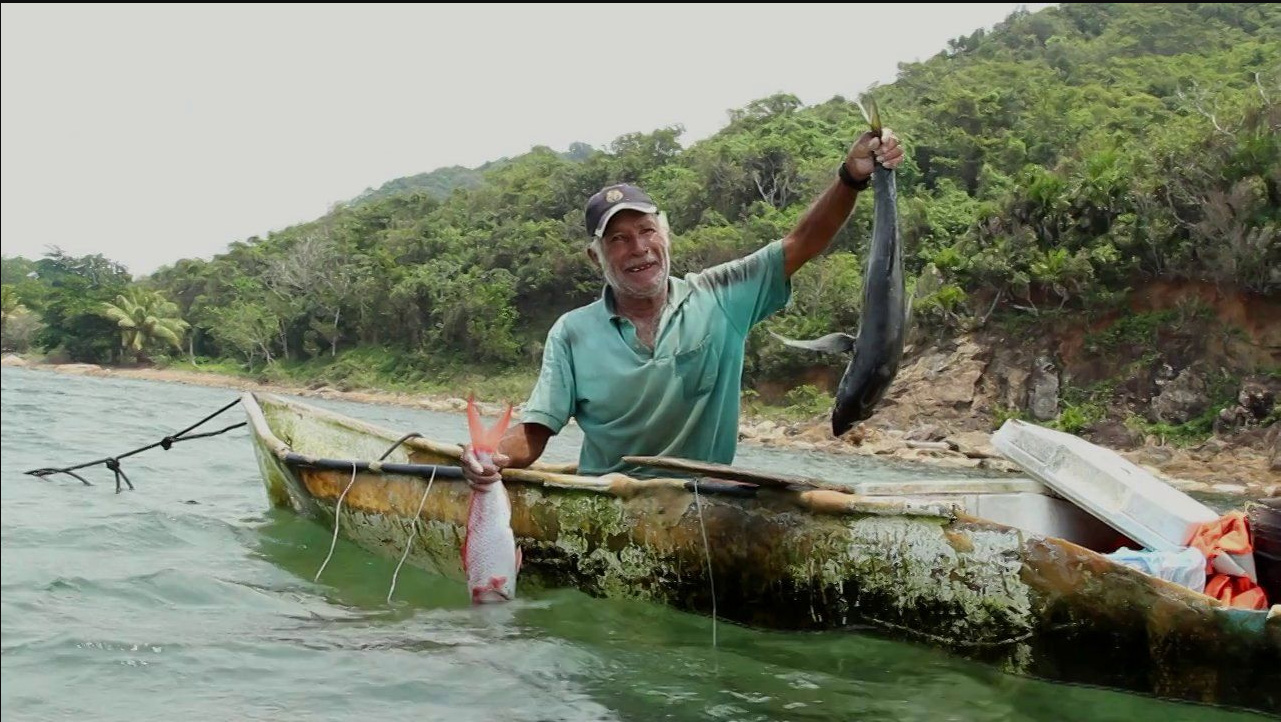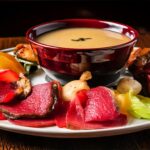
Discover Our Global Culinary Delights
At Chef Journeys, we bring you the most delectable recipes curated by Chef Gert Rausch. Whether you’re a seasoned cook or a beginner, we welcome you to indulge in our passion for global cuisine. From exotic Asian dishes to classic European delicacies, our recipes will take you on a journey around the world without leaving the comfort of your own kitchen. Join us on this culinary journey and bring a touch of international flavor to your table.
French Recipes
Potatoes Dauphinoise
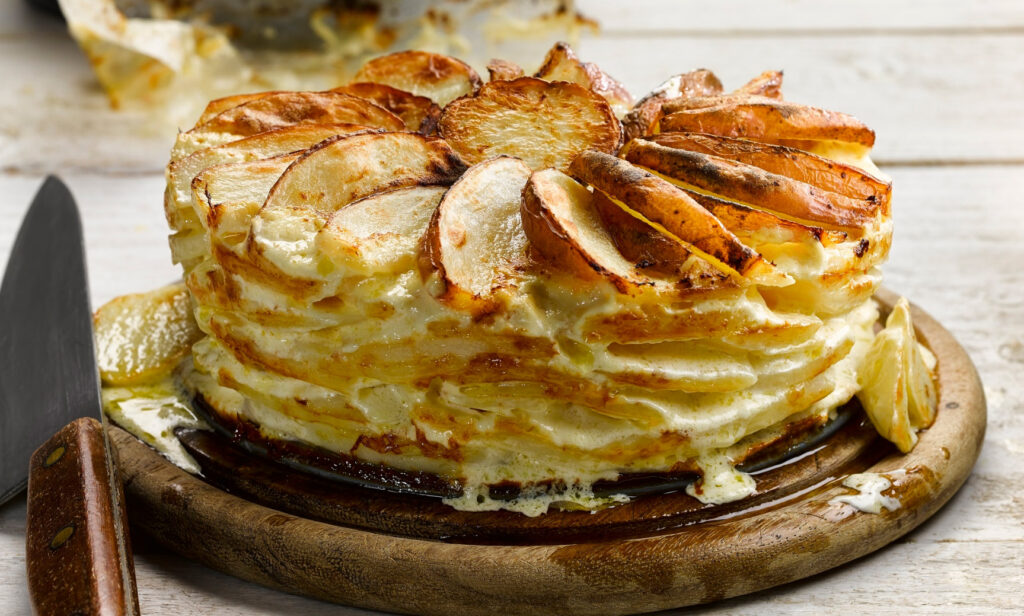
Gratin dauphinois is a French dish of sliced potatoes baked in milk or cream, using the gratin technique, from the Dauphiné region in south-eastern France. There are many variants of the name of the dish, including pommes de terre dauphinoise, potatoes à la dauphinoise and gratin de pommes à la dauphinoise
Escargots a la Bourguignonne
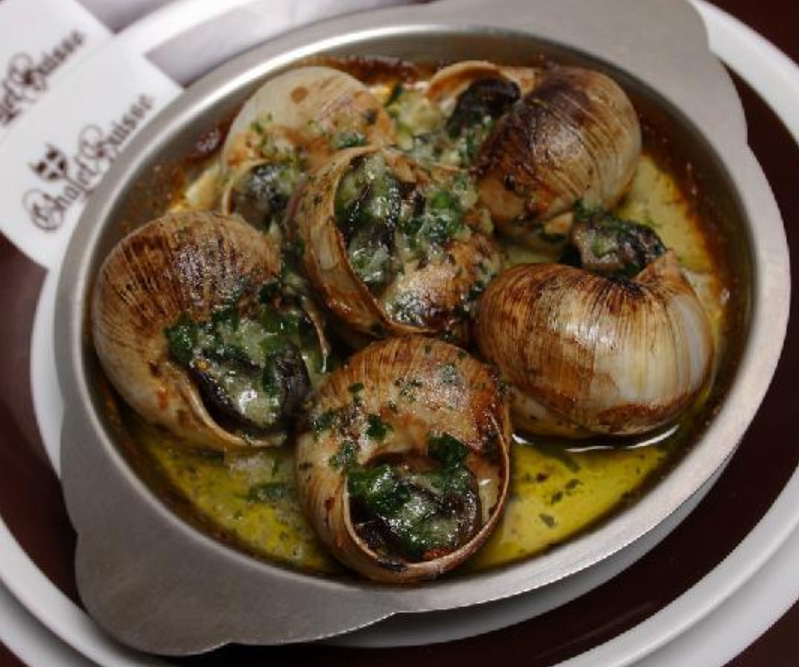
The garlicky sauce in this dish is almost as delicious as the escargots themselves; it’s hard to think of a better use for crusty bread than sopping up this luxurious “snail butter.” But the main event is the escargots’ tender texture and clean, woodsy flavor.
Coq au Vin
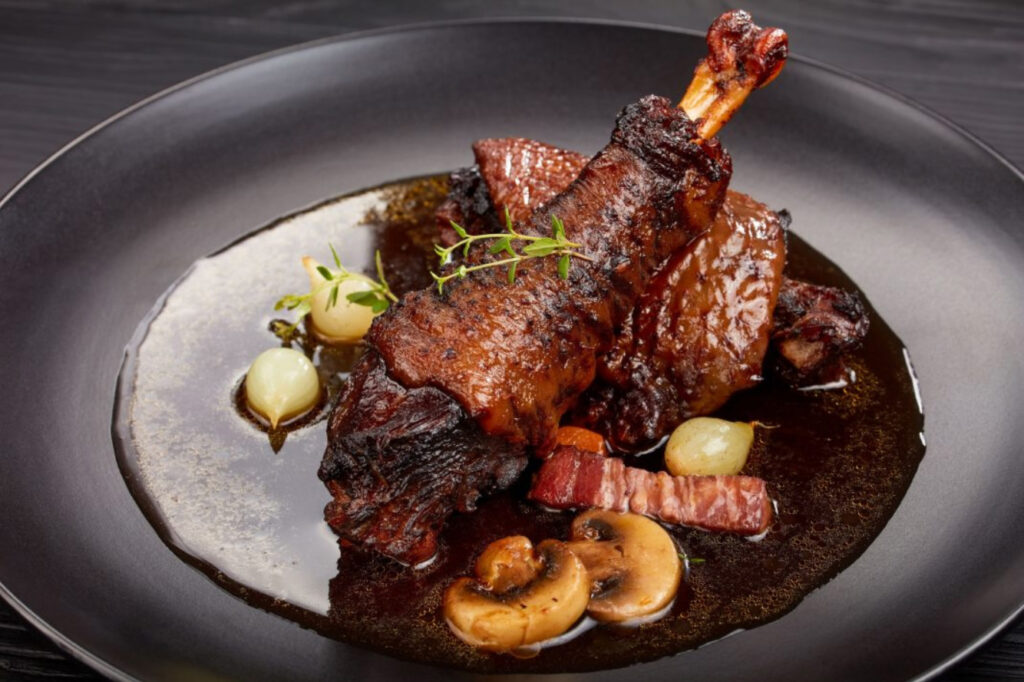
Legendary chef Julia Child appeared on “Good Morning America” on May 11, 1995, with her Ragout of Chicken
and Coq a Vin recipes. Coq au Vin is chicken in red wine with small braised onions, mushrooms, and lardons of
pork – an elaboration on the far more elementary preceding ragout, coq au vin involves more hand work since you
have lardons of bacon to prepare for the special flavor they give to the sauce. Then there is the traditional garnish of
small braised onions and sautéed mushrooms. This combination makes a wonderfully satisfying dish, and a fine one
for company.
Spicy Cajun Adventures
Hey there, flavor aficionados and culinary adventurers! Welcome to another episode of Global Culinary Delights, where we embark on a tantalizing journey through the world’s most captivating cuisines. Today, we’re diving deep into the heart of Cajun culture— a vibrant, spicy, and downright unforgettable style of cooking that’s got more soul than a jazz band on a hot New Orleans night.
Cajun Cuisine: The Spice of Southern Life
Let’s rewind the clock a bit. Picture this: the 18th century, a time when Acadian immigrants fled Canada, journeyed south, and settled in the swamplands of Louisiana. Out of the bayous and the rich, fertile land, a culinary tradition was born—one that would make your taste buds dance and your heart sing. Cajun cuisine is all about hearty, robust flavors and the kind of spice that makes you want to kick up your heels and shout, “Laissez les bons temps rouler!” (Let the good times roll!).
The Essence of Cajun Cooking
Cajun cooking is the epitome of soul food. It’s gumbo simmering with seafood and andouille sausage, it’s jambalaya brimming with rice, meat, and veggies, and it’s crawfish boils that turn into neighborhood feasts. This cuisine is a celebration of community and a testament to the ingenuity of the Acadian people who made the best of what the land had to offer.
A Symphony of Flavors
Every bite of Cajun food is like a symphony—a harmonious blend of French, Spanish, and African influences. The holy trinity of Cajun cooking—onions, bell peppers, and celery—is the foundation of many dishes. Add to that a generous dash of cayenne pepper, paprika, and a medley of other spices, and you’ve got yourself a culinary masterpiece.
From the Bayou to Your Kitchen
Now, I know what you’re thinking: How do I bring a taste of the bayou into my kitchen? Don’t worry, I’ve got you covered. Whether it’s a classic gumbo recipe or a modern twist on shrimp étouffée, I’ll guide you through every step. And remember, Cajun cooking isn’t just about following a recipe—it’s about embracing the spirit of improvisation and putting your own spin on things.
Join the Feast
If you’re ready to spice up your life and embark on a culinary adventure, tune in to our podcast episodes on Global Culinary Delights. You’ll hear stories from my travels, learn about the rich history and culture behind Cajun cuisine, and get plenty of tips to elevate your cooking game. Trust me, your taste buds will thank you!
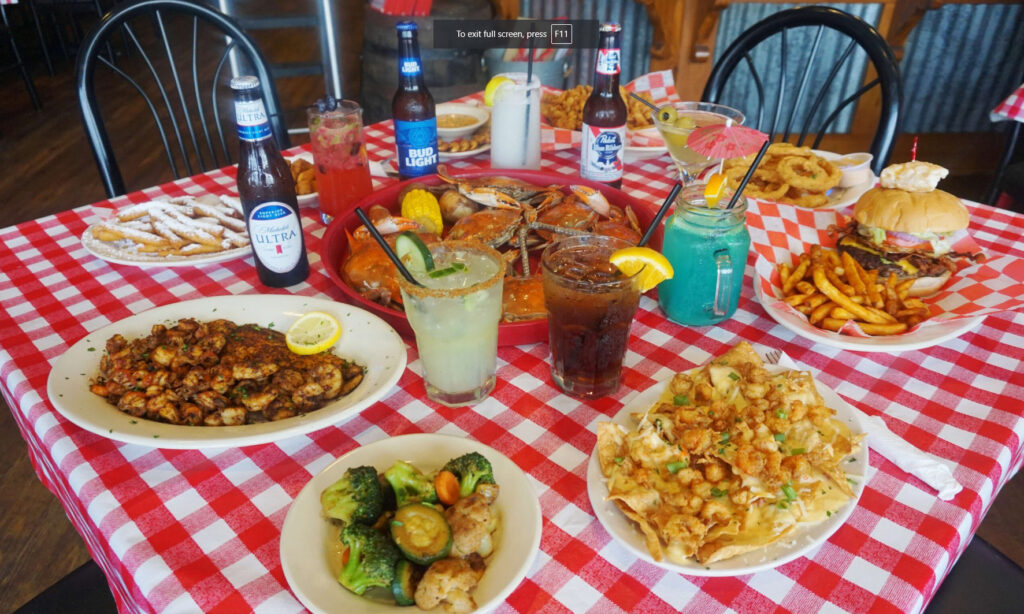
Global Culinary Delights: Cajun Cuisine's Greatest Hits
Hey there, culinary explorers and spice enthusiasts! Welcome to Global Culinary Delights on ChefJourney.com. Today, we’re diving deep into the flavorful, fiery, and festive world of Cajun cuisine. As a Cajun chef and storyteller, I’m here to guide you through 15 of the most beloved Cajun recipes that will make your taste buds dance the zydeco and your heart sing with joy. So grab your apron, a cold beverage, and let’s get cooking!
1. Classic Chicken and Sausage Gumbo
Let’s start with a Cajun staple: gumbo. This hearty, rich stew is packed with chicken, sausage, okra, and the holy trinity of Cajun cooking—onions, bell peppers, and celery. It’s seasoned to perfection with a dark roux and plenty of spices. Serve it over a bed of fluffy white rice and get ready to swoon.
Ingredients:
- 1/2 cup vegetable oil
- 1/2 cup flour
- 1 large onion, chopped
- 1 bell pepper, chopped
- 2 stalks celery, chopped
- 4 cloves garlic, minced
- 1 lb andouille sausage, sliced
- 1 lb chicken thighs, cubed
- 1 qt chicken stock
- 1 cup okra, sliced
- 2 bay leaves
- Salt, pepper, cayenne to taste
- Cooked white rice
Instructions:
- Make a roux by whisking oil and flour in a large pot over medium heat until dark brown.
- Add onions, bell peppers, celery, and garlic. Cook until soft.
- Stir in sausage and chicken, cook until browned.
- Add chicken stock, okra, bay leaves, and seasonings. Simmer for an hour.
- Serve over white rice.
2. Shrimp Étouffée
This dish is a celebration of succulent shrimp smothered in a rich, flavorful sauce made from a blonde roux, the holy trinity, and a blend of spices. Serve it over rice for a true taste of the bayou.
Ingredients:
- 1/4 cup butter
- 1/4 cup flour
- 1 onion, chopped
- 1 bell pepper, chopped
- 2 stalks celery, chopped
- 3 cloves garlic, minced
- 1 lb shrimp, peeled and deveined
- 2 cups chicken stock
- 1/4 cup tomato paste
- 2 tbsp Cajun seasoning
- Cooked white rice
- Green onions for garnish
Instructions:
- Melt butter in a large skillet and whisk in flour to make a blonde roux.
- Add onions, bell peppers, celery, and garlic. Cook until tender.
- Stir in shrimp and cook until pink.
- Add chicken stock, tomato paste, and Cajun seasoning. Simmer until thickened.
- Serve over white rice and garnish with green onions.
3. Crawfish Boil
Nothing says Cajun like a good ol’ crawfish boil. This communal feast is all about fresh crawfish, corn on the cob, potatoes, and plenty of spices boiled together in a big pot. It’s messy, spicy, and oh-so-delicious.
Ingredients:
- 10 lbs live crawfish
- 6 ears corn, halved
- 2 lbs small red potatoes
- 1 lb andouille sausage, sliced
- 1/2 cup Cajun seasoning
- 4 lemons, halved
- 4 bay leaves
- 1/4 cup salt
Instructions:
- Fill a large pot with water and bring to a boil. Add Cajun seasoning, lemons, bay leaves, and salt.
- Add potatoes and cook for 10 minutes.
- Add corn and sausage, cook for another 5 minutes.
- Add crawfish and cook for 5-7 minutes until bright red.
- Drain and pour onto a newspaper-covered table. Dig in!
4. Red Beans and Rice
This dish is comfort food at its finest. Slow-cooked red beans flavored with ham hocks, sausage, and spices served over fluffy rice. Perfect for a cozy night in.
Ingredients:
- 1 lb dried red beans, soaked overnight
- 1 onion, chopped
- 1 bell pepper, chopped
- 2 stalks celery, chopped
- 4 cloves garlic, minced
- 1 lb smoked sausage, sliced
- 2 ham hocks
- 2 bay leaves
- Salt, pepper, and hot sauce to taste
- Cooked white rice
- Green onions for garnish
Instructions:
- In a large pot, sauté onions, bell peppers, celery, and garlic until tender.
- Add sausage, ham hocks, red beans, bay leaves, and enough water to cover.
- Bring to a boil, then reduce heat and simmer for 2-3 hours until beans are tender.
- Season with salt, pepper, and hot sauce. Serve over white rice and garnish with green onions.
5. Boudin
Boudin is a unique Cajun sausage made with pork, rice, and spices. It’s great on its own, but even better when fried or grilled.
Ingredients:
- 1 lb pork shoulder, cubed
- 1 onion, chopped
- 1 bell pepper, chopped
- 2 cloves garlic, minced
- 2 cups cooked white rice
- 1 tsp cayenne pepper
- Salt and black pepper to taste
- Sausage casings
Instructions:
- Cook pork shoulder with onions, bell peppers, and garlic until tender.
- Mix in cooked rice, cayenne, salt, and black pepper.
- Stuff mixture into sausage casings.
- Grill or fry until golden brown.
6. Beignets
These sweet, fluffy pillows of fried dough are a must-try. Dust them with powdered sugar and enjoy with a cup of café au lait.
Ingredients:
- 2 1/4 tsp active dry yeast
- 1 1/2 cups warm water
- 1/2 cup sugar
- 1 tsp salt
- 2 large eggs
- 1 cup evaporated milk
- 7 cups flour
- 1/4 cup shortening
- Oil for frying
- Powdered sugar
Instructions:
- Dissolve yeast in warm water. Add sugar, salt, eggs, and evaporated milk. Mix well.
- Gradually add flour and shortening. Knead until smooth.
- Let dough rise until doubled in size.
- Roll out dough and cut into squares. Fry in hot oil until golden brown.
- Dust with powdered sugar and serve.
7. Cajun Fried Chicken
This crispy, spicy fried chicken is a crowd-pleaser. Serve with mashed potatoes and gravy for a comforting meal.
Ingredients:
- 1 whole chicken, cut into pieces
- 2 cups buttermilk
- 2 cups flour
- 2 tbsp Cajun seasoning
- Salt and pepper to taste
- Oil for frying
Instructions:
- Marinate chicken pieces in buttermilk for at least 2 hours.
- Mix flour with Cajun seasoning, salt, and pepper.
- Dredge chicken in seasoned flour.
- Fry in hot oil until golden brown and crispy.
8. Cajun Seafood Pasta
This creamy, spicy pasta is loaded with shrimp, crawfish, and crabmeat. It’s a decadent dish that’s perfect for special occasions.
Ingredients:
- 1 lb shrimp, peeled and deveined
- 1 lb crawfish tails
- 1/2 lb crabmeat
- 1 onion, chopped
- 1 bell pepper, chopped
- 2 cloves garlic, minced
- 1 cup heavy cream
- 1/2 cup grated Parmesan cheese
- 1 tsp Cajun seasoning
- 1 lb fettuccine
- Parsley for garnish
Instructions:
- Cook fettuccine according to package instructions.
- Sauté onions, bell peppers, and garlic until tender.
- Add shrimp, crawfish, and crabmeat. Cook until shrimp are pink.
- Stir in heavy cream, Parmesan cheese, and Cajun seasoning. Simmer until thickened.
- Toss with cooked fettuccine and garnish with parsley.
9. Blackened Catfish
This dish features catfish fillets coated in a blend of spices and seared to perfection. Serve with a side of dirty rice for a true Cajun meal.
Ingredients:
- 4 catfish fillets
- 1 tbsp paprika
- 1 tsp cayenne pepper
- 1 tsp garlic powder
- 1 tsp onion powder
- Salt and pepper to taste
- 2 tbsp butter
Instructions:
- Mix paprika, cayenne, garlic powder, onion powder, salt, and pepper.
- Coat catfish fillets with spice mixture.
- Melt butter in a hot skillet. Sear catfish until blackened on both sides.
10. Crawfish Étouffée
Another take on étouffée, this version features crawfish tails simmered in a rich, flavorful sauce. Serve over rice for a comforting meal.
Ingredients:
- 1/4 cup butter
- 1/4 cup flour
- 1 onion, chopped
- 1 bell pepper, chopped
- 2 stalks celery, chopped
- 3 cloves garlic, minced
- 1 lb crawfish tails
- 2 cups chicken stock
- 1/4 cup tomato paste
- 2 tbsp Cajun seasoning
- Cooked white rice
- Green onions for garnish
Instructions:
- Melt butter in a large skillet and whisk in flour to make a blonde roux.
- Add onions, bell peppers, celery, and garlic. Cook until tender.
- Stir in crawfish tails and cook until heated through.
- Add chicken stock, tomato paste, and Cajun seasoning. Simmer until thickened.
- Serve over white rice and garnish with green onions.
11. Cajun Corn Maque Choux
This creamy corn dish is a perfect side for any Cajun meal. Sweet corn, bell peppers, and onions are simmered in a creamy sauce with a hint of spice.
Ingredients:
- 4 ears corn, kernels removed
- 1 onion, chopped
- 1 bell pepper, chopped
- 2 cloves garlic, minced
- 1 cup heavy cream
- 1 tsp Cajun seasoning
- Salt and pepper to taste
Instructions:
- Sauté onions, bell peppers, and garlic until tender.
- Add corn kernels and cook until tender.
- Stir in heavy cream and Cajun seasoning. Simmer until thickened.
- Season with salt and pepper.
12. Dirty Rice
This flavorful rice dish is made with ground meat, spices, and the holy trinity. It’s a hearty side that pairs well with any Cajun main course.
Ingredients:
- 1 lb ground beef or pork
- 1 onion, chopped
- 1 bell pepper, chopped
- 2 stalks celery, chopped
- 3 cloves garlic, minced
- 2 cups cooked white rice
- 1 tsp Cajun seasoning
- Salt and pepper to taste
Instructions:
- Cook ground meat with onions, bell peppers, celery, and garlic until browned.
- Stir in cooked rice and Cajun seasoning.
- Season with salt and pepper.
13. Cajun Chicken Pasta
This creamy pasta dish features blackened chicken breasts and a spicy Alfredo sauce. It’s a comforting meal that’s perfect for any night of the week.
Ingredients:
- 2 chicken breasts, blackened
- 1 lb fettuccine
- 1 cup heavy cream
- 1/2 cup grated Parmesan cheese
- 1 tsp Cajun seasoning
- Parsley for garnish
Instructions:
- Cook fettuccine according to package instructions.
- Blacken chicken breasts in a hot skillet.
- Slice chicken and set aside.
- In the same skillet, stir in heavy cream, Parmesan cheese, and Cajun seasoning. Simmer until thickened.
- Toss with cooked fettuccine and top with sliced chicken.
- Garnish with parsley.
14. Cajun Stuffed Peppers
These bell peppers are stuffed with a flavorful mixture of rice, sausage, and spices. They’re a hearty, satisfying meal.
Ingredients:
- 4 bell peppers, tops cut off and seeds removed
- 1 lb ground sausage
- 1 onion, chopped
- 1 cup cooked white rice
- 1 tsp Cajun seasoning
- 1/2 cup grated cheddar cheese
Instructions:
- Preheat oven to 375°F.
- Cook sausage with onions until browned.
- Stir in cooked rice and Cajun seasoning.
- Stuff peppers with sausage mixture.
- Top with grated cheese.
- Bake for 25-30 minutes until peppers are tender and cheese is melted.
15. Cajun Crawfish Dip
This creamy, spicy dip is perfect for parties. Serve with crackers or baguette slices for a delicious appetizer.
Ingredients:
- 1 lb crawfish tails
- 1 cup mayonnaise
- 1 cup sour cream
- 1/2 cup grated Parmesan cheese
- 2 green onions, chopped
- 1 tsp Cajun seasoning
- Salt and pepper to taste
Instructions:
- Mix crawfish tails, mayonnaise, sour cream, Parmesan cheese, green onions, and Cajun seasoning.
- Season with salt and pepper.
- Chill until ready to serve.
Fundamentals of Smoking: Into the Woods and Beyond
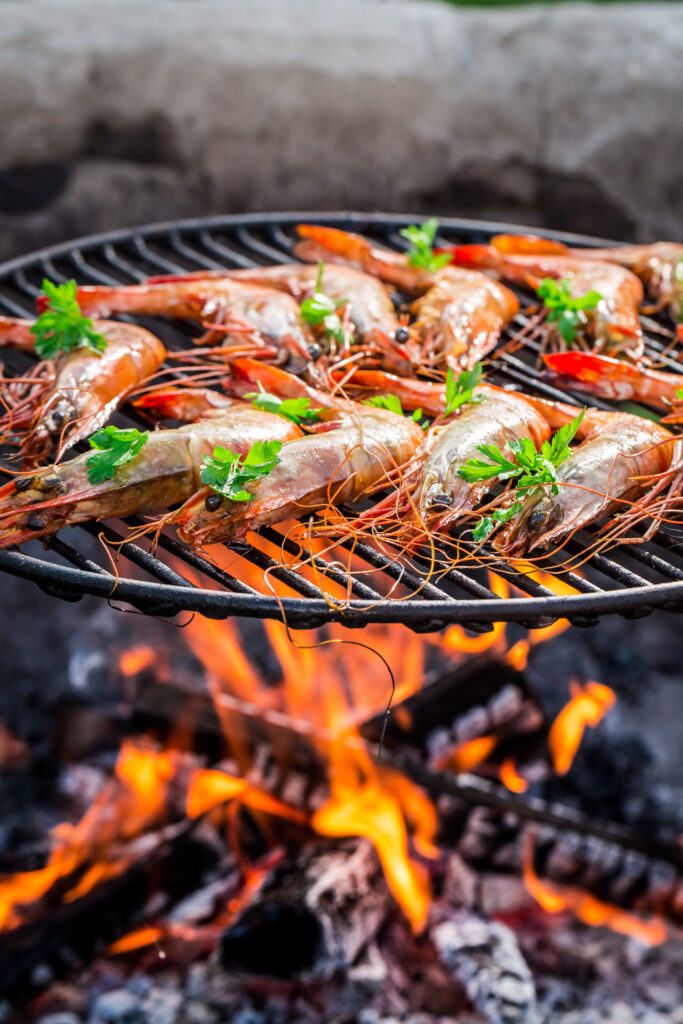
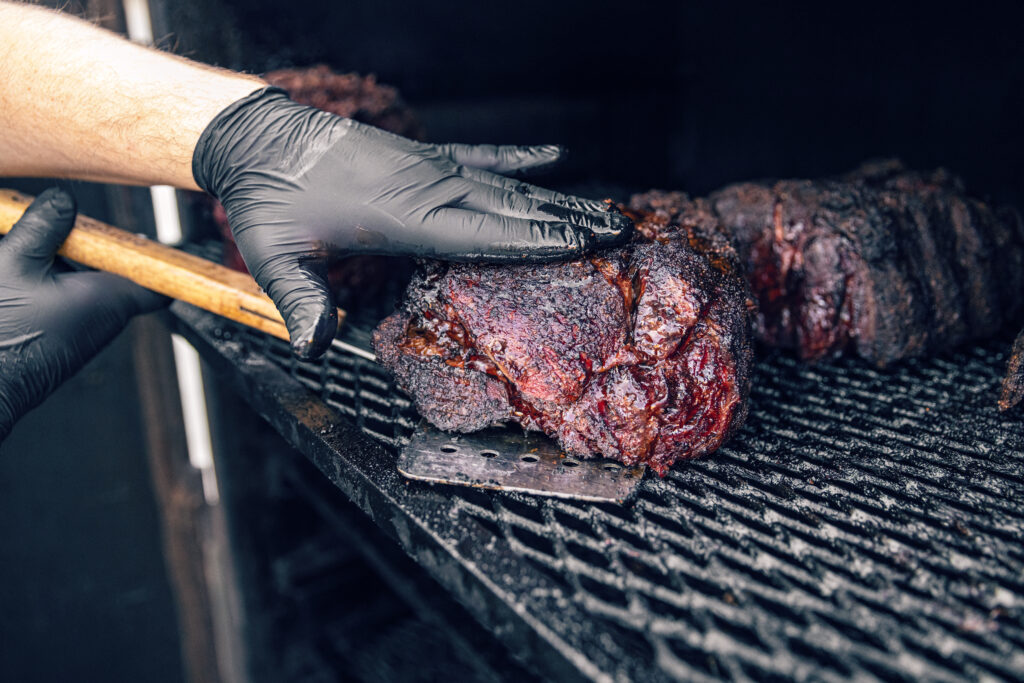


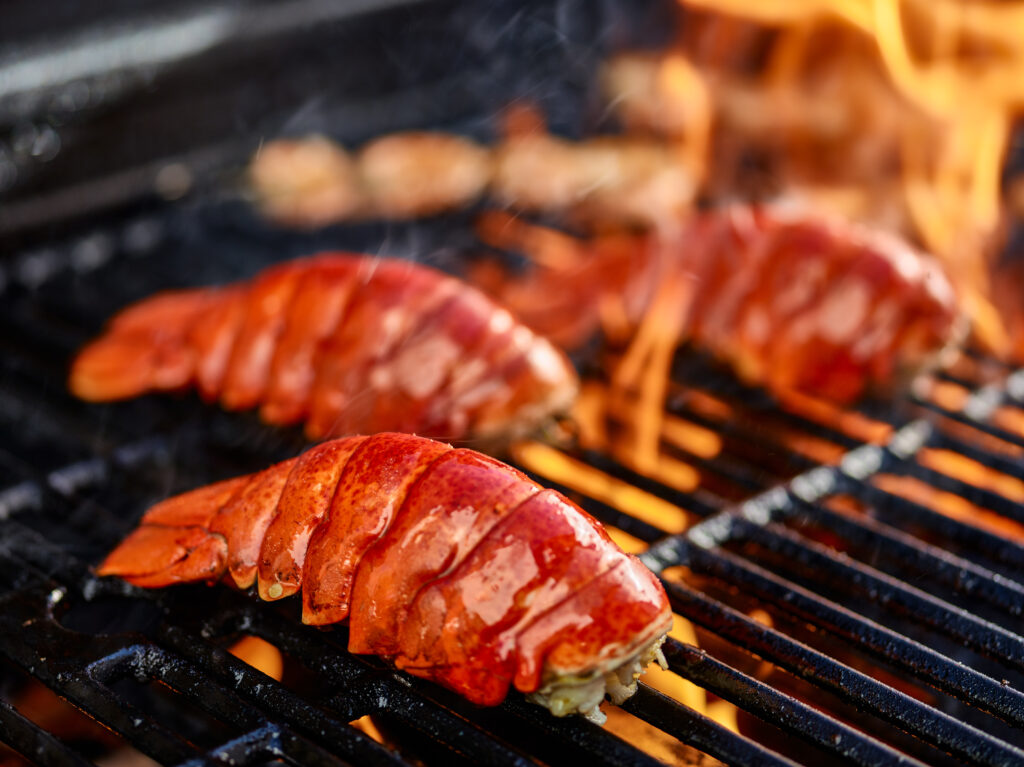
Hey there, smoke lovers and BBQ aficionados! Ready to dive into the smoky, savory world of smoking? Welcome to Global Culinary Delights on ChefJourney.com. Today, we’re breaking down the fundamentals of smoking with a fun and flavorful twist. Grab your apron, your favorite beverage, and let’s get smoky!
Into the Woods: Choosing Your Smoking Wood
First things first—let’s talk wood. The type of wood you use for smoking is crucial, and starting with trees native to your region is a great way to begin. Cedar shavings from the pet store work wonders for smoking salmon, giving it a delightful aroma. If you’re looking for something with a smooth, round flavor, try pecan wood or pecan shells. Pecan’s sisters, oak and hickory, also bring a robust, balanced taste to your meat.
Fruit woods like apple, cherry, and peach? Oh, they’re the sweethearts of the smoking world. Alder’s fine too, adding a gentle touch. Now, mesquite might be a BBQ legend for grilling, but be cautious—it’s a bit of a strong character for smoking due to its high creosote levels.
The Secret Smoke of Plants
Wood’s not the only star here. Other plant life can add unique flavors to your smoke game. Dried basil stems, anyone? Perfect for an aromatic twist. Orange Pekoe tea is fantastic for a festive Christmas duck or goose, and rosemary pairs beautifully with lamb leg or loins.
Feeling adventurous? Place a cast iron pot with leftover wine or beer next to the fire. The flavored vapors waft onto your meat or seafood, adding a subtle, delicious note. This might ruffle some BBQ pit masters’ feathers, but hey, we’re here to enhance flavors, not mask them.
Smoke and Seasoning: A Match Made in Heaven
Think of smoke as a seasoning—just like salt, pepper, and herbs. It layers another dimension of flavor onto your food, exciting those often-neglected bitter taste buds in the back of your mouth. While grilling can give you a nice char, smoking offers a gentle, subtle touch that’s just magical.
We’re not talking about smoking for hours here. A light smoke for a short time can do wonders. Take shrimp, for example. Smoke them for 20-30 minutes at 180 degrees, then chill and finish cooking with your recipe of choice. You’ll get juicier, more flavorful shrimp. Quail? Smoke it to a rare or medium-rare temp, cool it, and finish in the oven. Just keep the fire low, around 200-220 degrees.
Smoking Seafood: Keep it Moist
Seafood requires special care. It dries out quickly in the smoker, so here’s a pro tip: mix 1 tablespoon of smoke rub with 1 cup of sour cream or yogurt. Coat each piece of seafood (shrimp, scallops, lobster, or fish) with this mixture. The sour cream helps retain moisture and attract that lovely smoke flavor.
To the Stove Top: Compact and Convenient Smoking
Don’t let the weather or lack of outdoor space hold you back. A stove-top smoker is remarkably compact and convenient. With very little prep time, you can smoke on an electric or gas stove without a hood vent. It’s a simple, weatherproof way to season with smoke.
Hey there, grill masters and BBQ enthusiasts! Welcome to Global Culinary Delights on ChefJourney.com. Today, we’re cranking up the heat and diving into the smoky, savory world of outdoor grilling and BBQ. As a BBQ chef and world traveler, I’m here to share 10 of the most beloved grilling and BBQ recipes that will have you licking your fingers and reaching for seconds. So fire up those grills, grab a cold one, and let’s get cooking!
1. Texas-Style Brisket
First up, we have the king of BBQ: Texas-style brisket. This slow-cooked, smoky delight is all about patience and love. Rubbed with a blend of spices and smoked low and slow for hours, it’s tender, juicy, and absolutely worth the wait.
Ingredients:
- 1 whole beef brisket (10-12 lbs)
- 1/4 cup kosher salt
- 1/4 cup black pepper
- 2 tbsp paprika
- 2 tbsp garlic powder
- 2 tbsp onion powder
- 1 tbsp cayenne pepper
- Wood chips for smoking
Instructions:
- Mix all the spices to create a rub and generously coat the brisket.
- Preheat your smoker to 225°F and add wood chips.
- Smoke the brisket for 1.5 hours per pound until it reaches an internal temperature of 195°F.
- Let it rest for at least 30 minutes before slicing. Enjoy the melt-in-your-mouth goodness.
2. Carolina Pulled Pork
Next, we head to the Carolinas for some mouthwatering pulled pork. This pork shoulder is smoked until it’s fall-apart tender and then mixed with a tangy vinegar-based sauce.
Ingredients:
- 1 pork shoulder (8-10 lbs)
- 1/4 cup brown sugar
- 2 tbsp paprika
- 1 tbsp garlic powder
- 1 tbsp onion powder
- 1 tbsp salt
- 1 tbsp black pepper
- 1 cup apple cider vinegar
- 1/2 cup ketchup
- 1/4 cup brown sugar
- 1/4 cup Worcestershire sauce
- 1 tbsp red pepper flakes
Instructions:
- Rub the pork shoulder with brown sugar, paprika, garlic powder, onion powder, salt, and black pepper.
- Smoke at 225°F for 10-12 hours until the internal temperature reaches 195°F.
- Mix vinegar, ketchup, brown sugar, Worcestershire sauce, and red pepper flakes to make the sauce.
- Shred the pork and mix with the sauce. Serve on buns with coleslaw.
3. Memphis Dry-Rub Ribs
These Memphis-style ribs are coated in a flavorful dry rub and smoked to perfection. No sauce needed—these ribs are all about the spice.
Ingredients:
- 2 racks of baby back ribs
- 1/4 cup paprika
- 2 tbsp brown sugar
- 2 tbsp chili powder
- 1 tbsp garlic powder
- 1 tbsp onion powder
- 1 tbsp black pepper
- 1 tbsp salt
- 1 tsp cayenne pepper
Instructions:
- Mix all spices to create a dry rub and generously coat the ribs.
- Preheat your smoker to 225°F.
- Smoke the ribs for 5-6 hours until tender.
- Serve with extra dry rub on the side for a flavor boost.
4. Kansas City BBQ Chicken
Kansas City is known for its sweet and tangy BBQ sauce, and this BBQ chicken is the perfect showcase. Grilled to perfection and slathered in sauce, it’s a crowd-pleaser.
Ingredients:
- 4 chicken quarters
- 1 cup ketchup
- 1/2 cup molasses
- 1/4 cup apple cider vinegar
- 1/4 cup brown sugar
- 2 tbsp Worcestershire sauce
- 1 tbsp mustard powder
- 1 tsp garlic powder
- 1 tsp onion powder
- Salt and pepper to taste
Instructions:
- Mix ketchup, molasses, vinegar, brown sugar, Worcestershire sauce, mustard powder, garlic powder, onion powder, salt, and pepper to make the sauce.
- Grill chicken quarters over medium heat, basting with sauce during the last 10 minutes.
- Serve with extra sauce on the side.
5. Jamaican Jerk Chicken
Take a trip to the Caribbean with this spicy, flavorful Jamaican jerk chicken. Marinated in a blend of herbs, spices, and Scotch bonnet peppers, it’s grilled to juicy perfection.
Ingredients:
- 4 chicken thighs
- 4 chicken drumsticks
- 2 Scotch bonnet peppers, chopped
- 1 onion, chopped
- 3 cloves garlic, minced
- 1 tbsp thyme
- 1 tbsp allspice
- 1 tsp cinnamon
- 1 tsp nutmeg
- 1/4 cup soy sauce
- 1/4 cup brown sugar
- 2 tbsp lime juice
Instructions:
- Blend Scotch bonnet peppers, onion, garlic, thyme, allspice, cinnamon, nutmeg, soy sauce, brown sugar, and lime juice to make a marinade.
- Marinate chicken pieces for at least 4 hours.
- Grill over medium heat until cooked through.
- Serve with rice and peas.
6. Korean BBQ Short Ribs
Korean BBQ short ribs, or galbi, are marinated in a sweet and savory sauce and grilled to perfection. They’re tender, juicy, and packed with flavor.
Ingredients:
- 2 lbs beef short ribs
- 1/2 cup soy sauce
- 1/4 cup brown sugar
- 1/4 cup mirin
- 2 tbsp sesame oil
- 4 cloves garlic, minced
- 1 tbsp ginger, minced
- 2 green onions, chopped
- 1 tbsp sesame seeds
Instructions:
- Mix soy sauce, brown sugar, mirin, sesame oil, garlic, ginger, green onions, and sesame seeds to make the marinade.
- Marinate short ribs for at least 2 hours.
- Grill over high heat until charred and cooked through.
- Serve with kimchi and steamed rice.
7. Argentinian Grilled Steak (Asado)
Asado is the quintessential Argentinian BBQ, featuring perfectly grilled steak seasoned simply with salt and pepper. Served with chimichurri sauce, it’s a carnivore’s dream.
Ingredients:
- 2 lbs ribeye steak
- Salt and pepper to taste
- 1 cup fresh parsley, chopped
- 1/4 cup red wine vinegar
- 1/2 cup olive oil
- 4 cloves garlic, minced
- 1 tsp red pepper flakes
Instructions:
- Season ribeye steaks with salt and pepper.
- Grill over high heat to desired doneness.
- Mix parsley, vinegar, olive oil, garlic, and red pepper flakes to make chimichurri sauce.
- Serve steaks with chimichurri sauce on the side.
8. Greek Souvlaki
Greek souvlaki features skewered and grilled marinated pork, chicken, or lamb. Served with tzatziki sauce and pita, it’s a Mediterranean delight.
Ingredients:
- 2 lbs pork shoulder, cubed
- 1/4 cup olive oil
- 1/4 cup lemon juice
- 4 cloves garlic, minced
- 1 tbsp oregano
- Salt and pepper to taste
- Pita bread
- Tzatziki sauce
Instructions:
- Mix olive oil, lemon juice, garlic, oregano, salt, and pepper to make the marinade.
- Marinate pork cubes for at least 2 hours.
- Skewer and grill over medium heat until cooked through.
- Serve with pita bread and tzatziki sauce.
9. Moroccan Grilled Lamb Chops
These lamb chops are marinated in a blend of Moroccan spices and grilled to perfection. They’re aromatic, flavorful, and absolutely delicious.
Ingredients:
- 8 lamb chops
- 1/4 cup olive oil
- 2 tbsp lemon juice
- 4 cloves garlic, minced
- 1 tbsp cumin
- 1 tbsp coriander
- 1 tsp cinnamon
- 1 tsp paprika
- Salt and pepper to taste
Instructions:
- Mix olive oil, lemon juice, garlic, cumin, coriander, cinnamon, paprika, salt, and pepper to make the marinade.
- Marinate lamb chops for at least 2 hours.
- Grill over medium heat until cooked to desired doneness.
- Serve with couscous and grilled vegetables.
10. Hawaiian Huli Huli Chicken
This sweet and savory grilled chicken is marinated in a delicious blend of pineapple juice, soy sauce, and brown sugar. It’s a taste of the tropics in every bite.
Ingredients:
- 8 chicken thighs
- 1 cup pineapple juice
- 1/2 cup soy sauce
- 1/4 cup brown sugar
- 1/4 cup ketchup
- 2 cloves garlic, minced
- 1 tsp ginger, minced
Instructions:
- Mix pineapple juice, soy sauce, brown sugar, ketchup, garlic, and ginger to make the marinade.
- Marinate chicken thighs for at least 4 hours.
- Grill over medium heat until cooked through.
- Serve with rice and grilled pineapple.

Cinco de Mayo: A Fiesta of History, Culture, and Gastronomy
Hey there, fiesta enthusiasts and taco connoisseurs! Get ready to don your sombreros and shake those maracas because we’re diving headfirst into the colorful, flavorful world of Cinco de Mayo. This isn’t just another day on the calendar—it’s a celebration of Mexican heritage, history, and, of course, the kind of food that makes you want to dance salsa (both kinds) all night long. So grab a margarita, pull up a chair, and let’s get this fiesta started!
The History: More Than Just a Party
Contrary to popular belief, Cinco de Mayo is not Mexico’s Independence Day. That’s on September 16th, but hey, any excuse for a party, right? Cinco de Mayo commemorates the unlikely victory of the Mexican army over French forces at the Battle of Puebla on May 5, 1862. Picture this: a ragtag group of 4,000 Mexican soldiers, led by General Ignacio Zaragoza, facing off against a well-equipped French army twice their size. Against all odds, the Mexicans emerged victorious, and a legend was born.
This victory didn’t end the French occupation (that happened a few years later), but it became a symbol of Mexican resilience and patriotism. Today, Cinco de Mayo is celebrated more in the United States than in Mexico, particularly in areas with large Mexican-American communities. It’s a day to celebrate Mexican culture, heritage, and, of course, the culinary delights that make Mexico a foodie’s paradise.
The Festivities: Viva la Fiesta!
Cinco de Mayo celebrations are all about embracing the rich cultural tapestry of Mexico. Parades with vibrant floats, traditional Mexican music like mariachi and banda, folkloric dance performances, and colorful decorations transform cities into a sea of green, white, and red. Families and friends gather for lively fiestas, complete with games, piñatas, and, naturally, a feast of epic proportions.
The Gastronomy: A Feast for the Senses
Now, let’s get to the part we’ve all been waiting for—the food. Mexican cuisine is a symphony of flavors, colors, and textures that come together to create dishes that are as beautiful as they are delicious. On Cinco de Mayo, the spotlight is on traditional favorites that showcase the best of Mexican culinary heritage.
Tacos al Pastor
Imagine this: marinated pork, slow-cooked on a vertical spit, sliced thin and served on warm corn tortillas, topped with pineapple, onions, and cilantro. One bite and you’re transported to the bustling streets of Mexico City. Tacos al pastor are a fiesta for your taste buds!
Guacamole and Chips
No Cinco de Mayo celebration is complete without a big bowl of guacamole. Creamy avocados, zesty lime, fresh cilantro, and a hint of jalapeño come together to create a dip that’s perfect for scooping up with crispy tortilla chips. Pro tip: make extra, because it’ll disappear faster than you can say “olé!”
Tamales
Tamales are little pockets of joy wrapped in corn husks. Filled with savory meats, cheese, or even sweet fillings like chocolate, they’re steamed to perfection. Making tamales is often a family affair, with everyone pitching in to spread the masa and fold the husks. The result? Pure culinary magic.
Chiles en Nogada
This dish is a true showstopper. Poblano peppers stuffed with a savory-sweet mixture of meat, fruits, and spices, topped with a creamy walnut sauce and sprinkled with pomegranate seeds. It’s as delicious as it is beautiful, representing the colors of the Mexican flag.
Margaritas
Of course, we can’t forget the drinks. Margaritas are the quintessential Cinco de Mayo beverage. Whether you like them frozen or on the rocks, with salt or without, a margarita made with fresh lime juice and good tequila is the perfect companion to your fiesta.
A Few Fun Facts to Impress Your Friends
- Cinco de Mayo is not Mexican Independence Day. (Worth repeating, because it’s a common misconception.)
- The Battle of Puebla didn’t end the French occupation. But it was a significant morale boost for the Mexican resistance.
- The largest Cinco de Mayo celebration is in Los Angeles. The annual Fiesta Broadway attracts hundreds of thousands of people.
- It’s not a federal holiday in Mexico. Cinco de Mayo is primarily celebrated in the state of Puebla, where the battle took place.
Bringing the Fiesta Home
Whether you’re hosting a big party or just enjoying a quiet night in, Cinco de Mayo is the perfect opportunity to explore the rich flavors and vibrant culture of Mexico. Try your hand at making tacos al pastor, whip up a batch of guacamole, and raise a margarita to the indomitable spirit of the Mexican people.
So, amigos, let’s celebrate Cinco de Mayo with all the gusto it deserves. Here’s to history, heritage, and a whole lot of delicious food. ¡Viva México!
Top 10 Beloved Cinco de Mayo Recipes: A Fiesta for Your Taste Buds
Hey there, fiesta fanatics and culinary explorers! Welcome to our ultimate Cinco de Mayo recipe roundup. Whether you’re planning a big bash or a cozy night in, these dishes will make your celebration as vibrant and lively as a Mexican street festival. So grab your sombrero, mix a margarita, and let’s dive into the top 10 most beloved Cinco de Mayo recipes. Prepare to be amazed, amused, and absolutely hungry!
1. Tacos al Pastor: The King of Street Food
Let’s kick things off with a true legend: Tacos al Pastor. These beauties are the life of any Cinco de Mayo party. Imagine succulent pork marinated in a mix of chiles, achiote, and pineapple, slow-cooked on a vertical spit, and served on warm corn tortillas with fresh cilantro, onions, and more pineapple. One bite and you’re transported to a bustling Mexican taquería.
Ingredients:
- 2 lbs pork shoulder, thinly sliced
- 1 cup pineapple juice
- 1/4 cup vinegar
- 3 tbsp achiote paste
- 4 cloves garlic, minced
- 1 tbsp dried oregano
- 1 tbsp cumin
- 1 tbsp paprika
- Salt and pepper to taste
- Fresh pineapple, diced
- Corn tortillas
- Fresh cilantro and onions for garnish
Instructions:
- Marinate the pork in pineapple juice, vinegar, achiote paste, garlic, oregano, cumin, paprika, salt, and pepper for at least 4 hours.
- Cook the pork on a vertical spit or grill until tender and slightly charred.
- Serve on warm tortillas with diced pineapple, cilantro, and onions. Enjoy!
2. Guacamole: The Ultimate Party Starter
No Cinco de Mayo celebration is complete without a big bowl of guacamole. This creamy, zesty dip is the perfect companion to tortilla chips and a cold cerveza. And let’s be honest, there’s something magical about watching guacamole disappear faster than you can say “¡Viva México!”
Ingredients:
- 4 ripe avocados
- 1 lime, juiced
- 1/2 red onion, finely chopped
- 1 jalapeño, seeded and minced
- 2 tomatoes, diced
- Fresh cilantro, chopped
- Salt and pepper to taste
Instructions:
- Mash the avocados in a bowl.
- Add lime juice, red onion, jalapeño, tomatoes, cilantro, salt, and pepper. Mix well.
- Serve with tortilla chips and watch it vanish!
3. Chiles en Nogada: A True Showstopper
This dish is as beautiful as it is delicious. Chiles en Nogada features poblano peppers stuffed with a savory-sweet mixture of meat, fruits, and spices, topped with a creamy walnut sauce and sprinkled with pomegranate seeds. It’s a feast for the eyes and the palate, representing the colors of the Mexican flag.
Ingredients:
- 4 poblano peppers, roasted and peeled
- 1 lb ground beef or pork
- 1 apple, diced
- 1 pear, diced
- 1/2 cup raisins
- 1/2 cup almonds, chopped
- 1 onion, chopped
- 2 cloves garlic, minced
- 1 cinnamon stick
- 1/2 cup tomato sauce
- Salt and pepper to taste
- 1 cup walnuts, soaked
- 1/2 cup cream cheese
- 1/2 cup milk
- Pomegranate seeds for garnish
Instructions:
- Sauté onions, garlic, ground meat, apple, pear, raisins, almonds, and cinnamon stick. Add tomato sauce, salt, and pepper. Cook until the mixture is well blended and fragrant.
- Stuff the roasted poblano peppers with the meat mixture.
- Blend walnuts, cream cheese, and milk to make the walnut sauce.
- Pour the walnut sauce over the stuffed peppers and garnish with pomegranate seeds.
4. Pozole: A Hearty Hominy Stew
This traditional Mexican soup is a hearty bowl of comfort. Pozole is made with hominy, pork, and a rich red chile broth, garnished with fresh toppings like radishes, cabbage, and lime. It’s a soul-warming dish that’s perfect for celebrating Cinco de Mayo.
Ingredients:
- 1 lb pork shoulder, cubed
- 1 can hominy, drained
- 4 dried guajillo chiles
- 4 dried ancho chiles
- 1 onion, chopped
- 4 cloves garlic, minced
- 1 tsp cumin
- 1 tsp oregano
- Salt and pepper to taste
- Radishes, sliced
- Cabbage, shredded
- Lime wedges
Instructions:
- Cook pork shoulder in a large pot with water until tender.
- Remove stems and seeds from the chiles and soak them in hot water. Blend with garlic and onion to make a paste.
- Add the chile paste, hominy, cumin, oregano, salt, and pepper to the pot with the pork. Simmer for 30 minutes.
- Serve with radishes, cabbage, and lime wedges.
5. Tamales: Little Pockets of Joy
Making tamales is a labor of love and a great way to bring family and friends together. These little bundles are made with masa (corn dough) and filled with delicious ingredients like meat, cheese, or sweet fillings, then wrapped in corn husks and steamed to perfection.
Ingredients:
- 2 cups masa harina
- 1 1/2 cups chicken broth
- 1/2 cup lard or vegetable shortening
- 1 tsp baking powder
- 1/2 tsp salt
- Corn husks, soaked
- Filling of choice (shredded chicken, pork, cheese, or sweet fillings)
Instructions:
- Beat lard or shortening until fluffy. Gradually add masa harina, baking powder, and salt.
- Slowly add chicken broth until the dough is soft and pliable.
- Spread the dough onto soaked corn husks, add filling, and fold.
- Steam the tamales for about 1-2 hours until the dough is firm.
6. Enchiladas: A Cheesy Delight
Enchiladas are a Mexican classic that everyone loves. Rolled tortillas filled with meat, cheese, or beans, smothered in a rich, spicy sauce, and baked until bubbly. They’re comfort food at its finest.
Ingredients:
- 12 corn tortillas
- 2 cups shredded chicken or beef
- 2 cups shredded cheese
- 2 cups enchilada sauce
- 1 onion, chopped
- 2 cloves garlic, minced
- Fresh cilantro for garnish
Instructions:
- Sauté onion and garlic until soft. Add shredded chicken or beef.
- Dip tortillas in enchilada sauce to coat.
- Fill each tortilla with the meat mixture and some cheese. Roll up and place in a baking dish.
- Pour remaining sauce over the enchiladas and top with cheese.
- Bake at 350°F for 20-25 minutes until bubbly.
- Garnish with fresh cilantro.
7. Quesadillas: A Cheesy Snack
Quesadillas are the perfect quick snack or appetizer. Crispy tortillas filled with gooey melted cheese and your choice of extras—like chicken, mushrooms, or spinach. Serve with salsa and guacamole for dipping.
Ingredients:
- 8 flour tortillas
- 2 cups shredded cheese
- 1 cup cooked chicken, mushrooms, or spinach (optional)
- Salsa and guacamole for serving
Instructions:
- Heat a tortilla in a skillet over medium heat.
- Sprinkle with cheese and your choice of fillings.
- Top with another tortilla and cook until the cheese is melted and the tortilla is golden brown.
- Cut into wedges and serve with salsa and guacamole.
8. Sopes: Mini Tortilla Bowls
Sopes are like mini tortilla bowls topped with beans, meat, cheese, and fresh veggies. They’re fun to make and even more fun to eat!
Ingredients:
- 2 cups masa harina
- 1 1/2 cups water
- 1/4 tsp salt
- Refried beans
- Shredded lettuce
- Crumbled cheese
- Salsa
Instructions:
- Mix masa harina, water, and salt to form a dough.
- Divide into small balls and flatten into thick discs.
- Cook on a hot griddle until firm, then pinch the edges to form a rim.
- Top with refried beans, lettuce, cheese, and salsa.
9. Flan: A Creamy Dessert
Flan is a rich, creamy custard topped with a layer of caramel sauce. It’s the perfect way to end your Cinco de Mayo feast on a sweet note.
Ingredients:
- 1 cup sugar
- 6 large eggs
- 1 can sweetened condensed milk
- 1 can evaporated milk
- 1 tbsp vanilla extract
Instructions:
- Melt sugar in a saucepan over medium heat until it turns golden brown. Pour into a baking dish to coat the bottom.
- Blend eggs, sweetened condensed milk, evaporated milk, and vanilla.
- Pour the mixture over the caramelized sugar in the baking dish.
- Bake in a water bath at 350°F for about 1 hour.
- Let cool, then refrigerate for at least 4 hours before serving.
10. Margaritas: The Ultimate Cocktail
No Cinco de Mayo celebration is complete without margaritas. This classic cocktail, made with tequila, lime juice, and triple sec, is the perfect way to toast to Mexican culture and heritage.
Ingredients:
- 2 oz tequila
- 1 oz lime juice
- 1 oz triple sec
- Salt for rimming the glass
- Lime wedges for garnish
Instructions:
- Rim the glass with salt.
- Shake tequila, lime juice, and triple sec with ice.
- Pour into the glass and garnish with a lime wedge. ¡Salud!

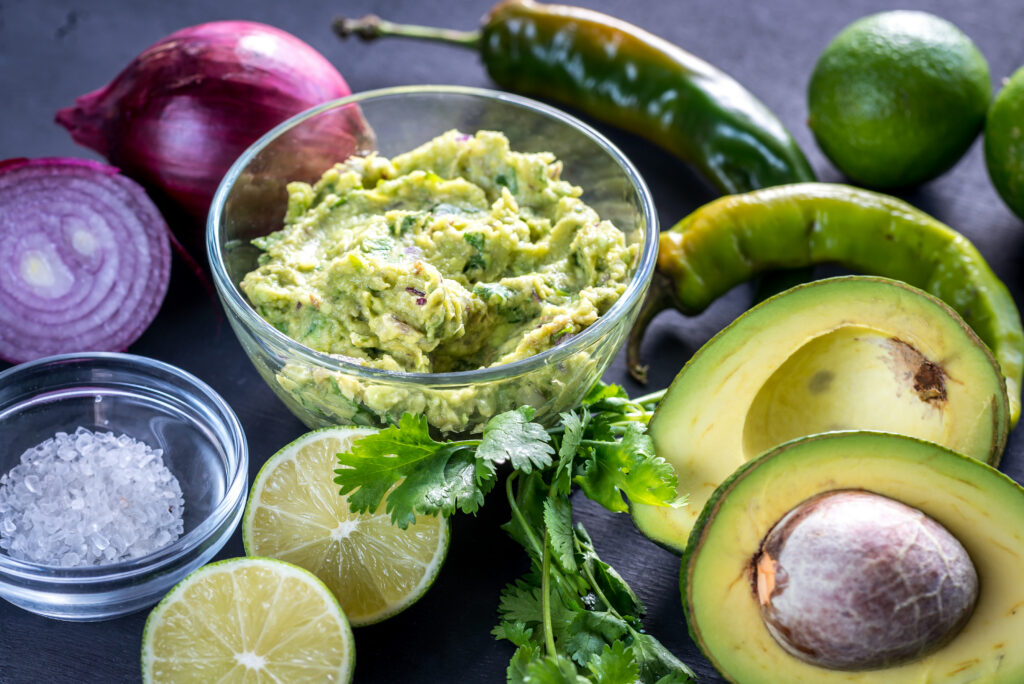
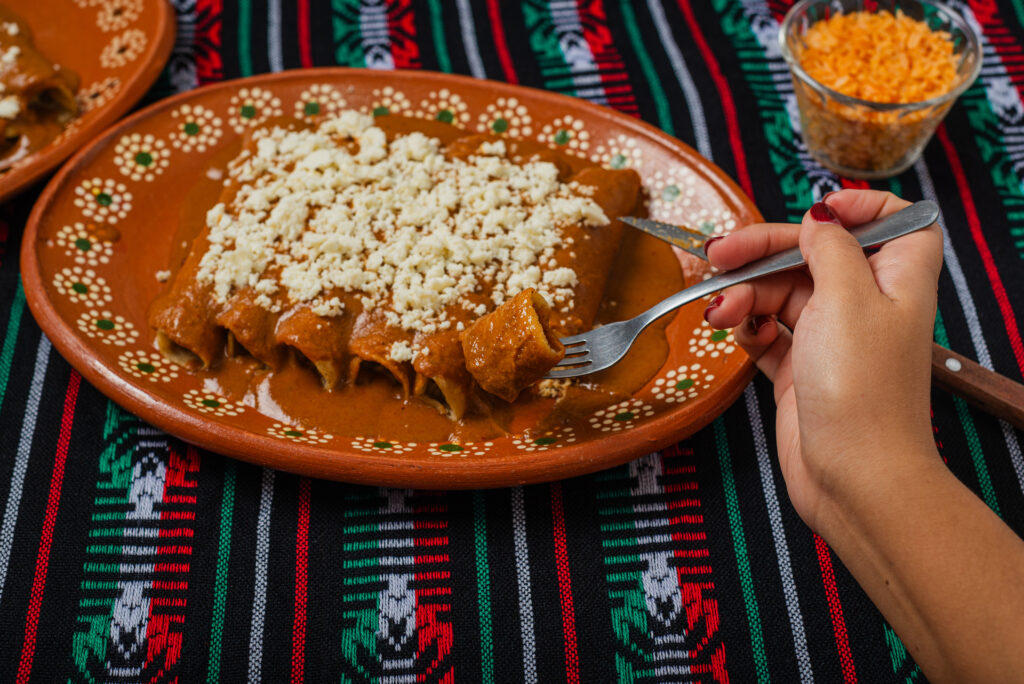
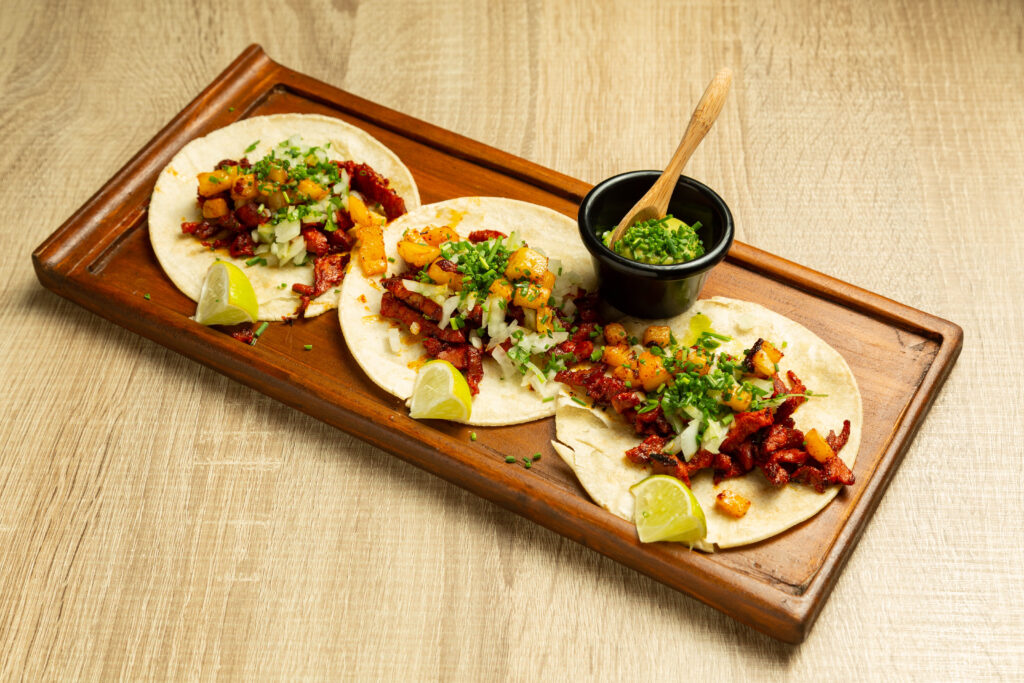
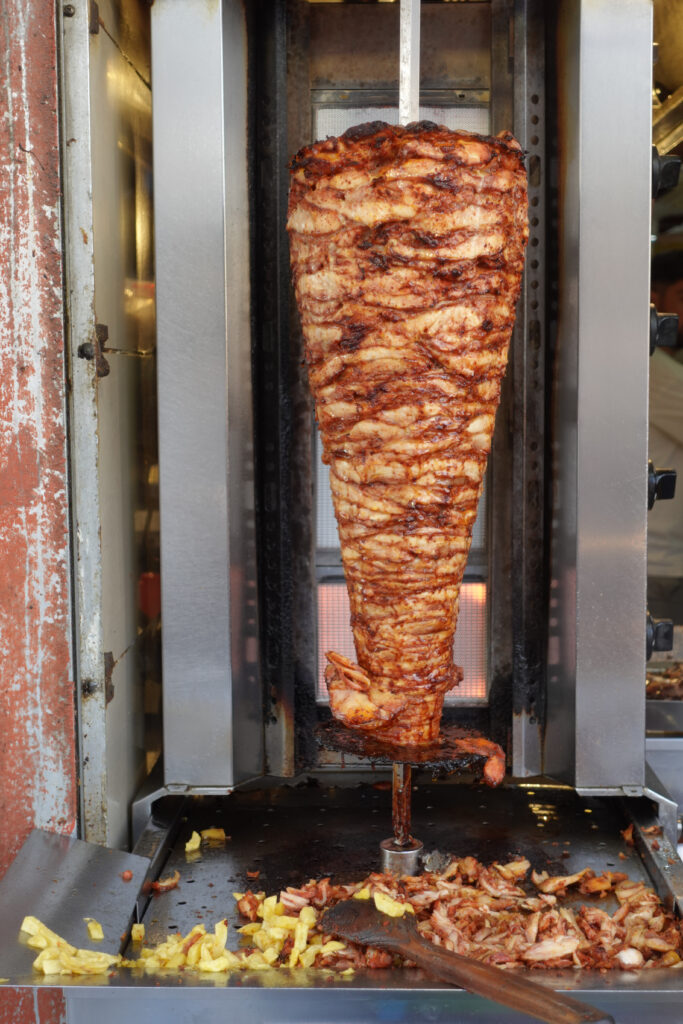
A Call to Culinary Adventure: Explore New Horizons with Gert Rausch
Hey there, fellow food lovers and intrepid taste adventurers! Are you ready to embark on a gastronomic journey that will tantalize your taste buds and transport you to far-off lands? Well, buckle up because we’ve got not one, but two culinary escapades lined up for you, courtesy of the culinary maestro himself, Gert Rausch.
Book 1: Pasta Passione: A Gastronomic Voyage Through Italy’s Soul
Picture this: rolling hills of Tuscany, the vibrant streets of Naples, and the romantic canals of Venice. Now, imagine savoring the soul of Italy in every bite. In “Pasta Passione: A Gastronomic Voyage Through Italy’s Soul,” Gert Rausch takes you on an unforgettable culinary tour of Italy. From the simple, rustic pastas of the countryside to the elegant dishes of the finest Italian ristorantes, this book is your ticket to Italy’s heart through its kitchens.
- Why You’ll Love It: Learn to cook authentic Italian dishes that will make your Nonna proud. Discover the secrets of making perfect pasta from scratch and dive into recipes that celebrate the true essence of Italian cuisine.
- Fun Fact: Did you know that Italians consume over 60 pounds of pasta per person each year? Join the club and make your kitchen a little corner of Italy!
Book 2: A New Nicaraguan Cuisine
Ready for a culinary adventure that’s a bit closer to the equator? “A New Nicaraguan Cuisine” is your passport to the vibrant, colorful, and mouthwatering world of Nicaraguan food. Gert Rausch, a master of melding traditional flavors with modern twists, brings you recipes that celebrate the rich culinary heritage of Nicaragua while introducing fresh, innovative touches.
- Why You’ll Love It: From the bustling markets of Granada to the serene beaches of San Juan del Sur, this book captures the essence of Nicaraguan cuisine. Get ready to whip up dishes that are as exciting as a Nicaraguan fiesta and as comforting as a home-cooked meal.
- Fun Fact: Nicaragua is known as the land of lakes and volcanoes. With this book, your kitchen will be known as the land of irresistible flavors!
Why Buy These Books?
- Travel Without Leaving Home: Each recipe is a journey, a story, a cultural experience.
- Impress Your Guests: Become the culinary star of your next dinner party with dishes that are as delicious as they are beautiful.
- Easy to Follow: Gert’s engaging and humorous style makes even the most complex recipes approachable and fun.
Get Your Copies Today!
Don’t miss out on these incredible culinary adventures. Head over to chefjourney.com and grab your copies of “Pasta Passione: A Gastronomic Voyage Through Italy’s Soul” and “A New Nicaraguan Cuisine.” Whether you’re a seasoned chef or a kitchen novice, Gert Rausch’s books are the perfect addition to your cookbook collection.
Final Thought:
Remember, life is too short for boring food. Embrace the flavors, the stories, and the joy of cooking with Gert Rausch. Buy the books, fire up your stove, and let the culinary adventures begin! ¡Buen provecho and Buon appetito!
Stuffed New England Quahogs
Ingredients:
- fresh chopped clams and fresh large quahogs
- one dozen fresh large quahogs
- one quart fresh chopped clams
- 2 cups fresh clam juice
- 1 portuguese bread loaf
- 1 whole portuguese sweet bread
- 2 large green bell peppers
- 2 large red sweer peppers
- 2 whole hot portuguese chedice tubes
- 4 tablespoons portuguese olive oil
- 1 cup fresh chopped parsley
- 3 small challotts
- 2 teaspoons black pepper
- 1 cup red crushed pepper from a jar
- 2 fresh lemons for garnish
- 1 teaspoon butter to taste to garnish
Directions
- boil large pot of water, add 2 tbl black pepper to flush out sand from quahogs. Add quahogs to boiling water. Cook on high until quahogs open up. Set them aside to cool. Remove the quahog meat and chop into bite size pieces to taste.
- place loaf of bread and sweet bread into large bowl. Add clamjuice and let sit to soak up and get moist.
- dice up green , red peppers and challotts also fresh parsley
- in an extra large bowl add chopped quahogs ,chopped clams ,bread, sweet bread and rest of ingredients. Place in refrigerator for 1 half hour to chill.
- rinse out the quahog shells let dry
- Take one shell at a time and generously stuff with mixture. Wrap each quahog after stuffed in heavy duty tin foil.
- You can freeze these or cook right away
- place the wrapped quahogs on the oven rack and cook for 1 hour on 375 degrees. After that open up the tin foil to expose the stuffed quahog and broil for 15 minutes on hidh. This will crisp it up a bit.
- Garnish with a dallop of creamy butter or lemon squeeze
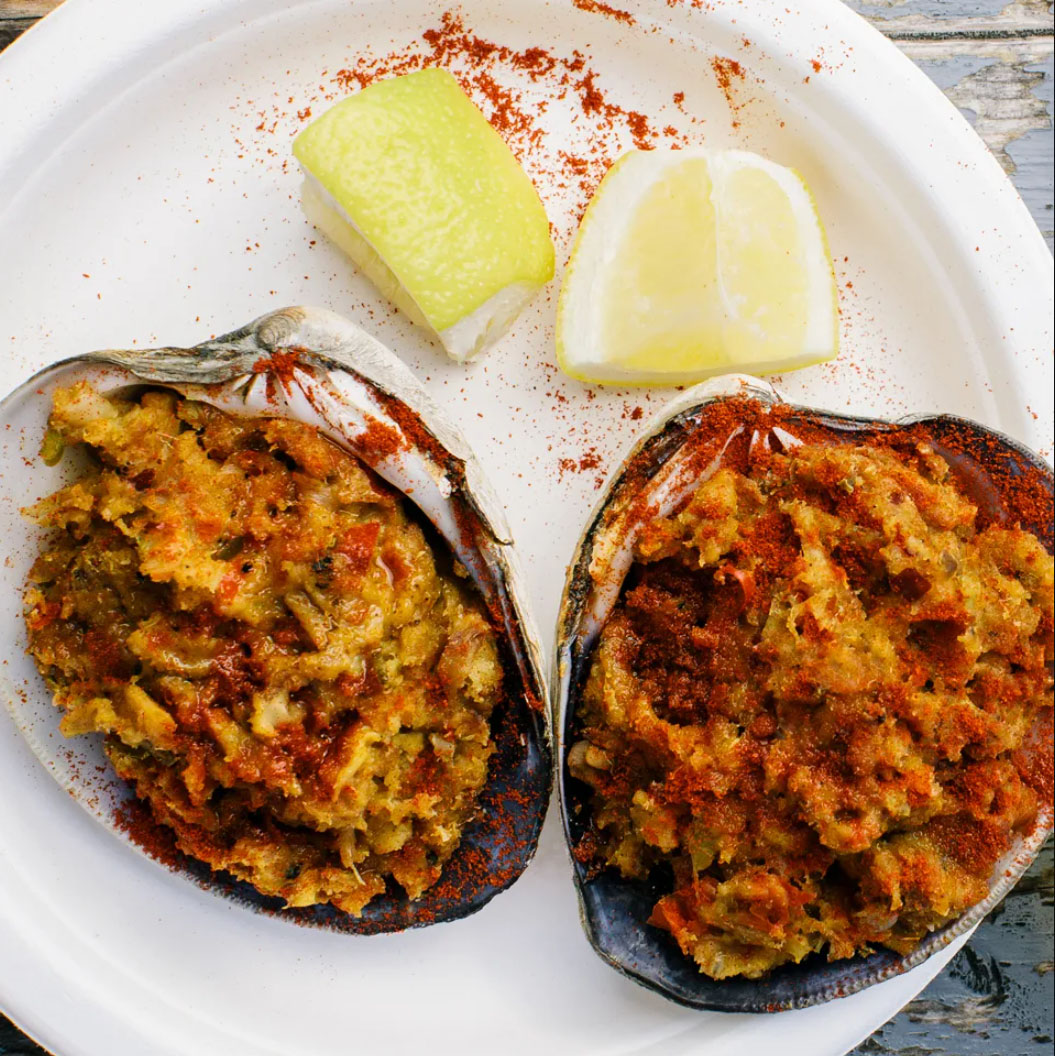
Steamer Clams
Also called soft-shell, Ipswich, or Essex clams, the species Mya arenaria is mainly found in New England, where clams live buried in the sediment on tidal flats. Their shells are very thin and easily broken (hence the name “soft-shell”) and they can be served a variety of ways including in chowder, fried, or steamed. Steamers have a piece of “neck skin” that can hold some sand, so they must be cleaned well and the piece of skin removed before eating.
“I was told by New Englanders to soak clams in fresh water with a bit of cornmeal to help purge them of sand,” says Harley Peet, executive chef for Bluepoint Hospitality Group, which operates several boutique restaurants on Maryland’s Eastern Shore. “But running them under cold water for several minutes is also effective.”
If you serve them steamed you can also clean them right before eating by dipping them in the broth in which they were cooked before dunking them in butter.

Newengland Fried Clams
Ingredients:
- For the New England style fry mix
- 1 cup corn flour (not cornmeal; see FAQ above)
- 1 cup all-purpose flour
- 1 teaspoon fine sea salt or table salt
- 1/2 teaspoon freshly ground black pepper
- 1/4 teaspoon cayenne pepper
- For the clams
- 1 1/2 pounds of shucked whole belly steame r clams
- About 6 cups peanut, canola, or other vegetable oil for deep-frying
- 1 cup buttermilk (either low-fat or full-fat)
- New England-Style Fry Mix (above)
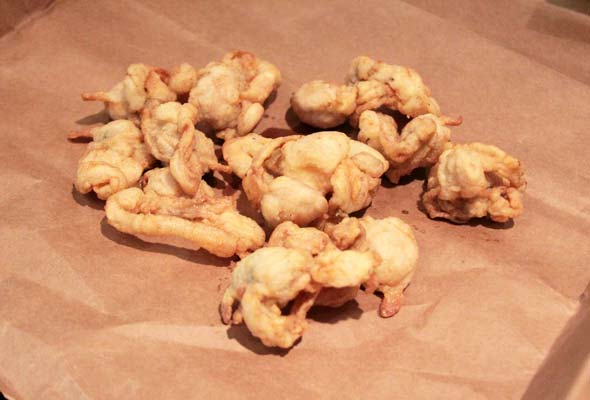
Directions
- Combine the flours, salt, and both peppers in a large mixing bowl and mix well. You’ll have more than you need for this recipe, so whatever is left over you can store in an airtight glass container in the refrigerator for several weeks or more.
- In many cases, you will be frying in batches to avoid the problems that can happen if you overcrowd your fryer. In anticipation of this, line a baking sheet with clean brown paper bag, and preheat the oven to 250ºF (121°C).
- Heat 3 inches of oil to 375°F in a 4- to 5-quart Dutch oven over medium heat or in a deep fryer.
- While the oil is heating, pour the buttermilk into a large bowl, and put the fry mix in another. Drop the clams into the buttermilk and stir gently. Using a Chinese wire-mesh skimmer or a slotted spoon, carefully lift up a small batch (in this case, about half of the clams you’re frying), allowing the excess buttermilk to drip back into bowl.
- Drop the clams into the fry mix and gently toss them to coat evenly with the mix. Quickly dry off the skimmer.
When the oil reaches temperature, lift the clams out of the fry mix with the skimmer, gently shake off the excess, and slip them carefully into the oil.
Try to spread the food out in the pot so there is less chance of the pieces sticking to each other.
Stir the clams so that they cook evenly, 1 to 1 1/2 minutes more. This also helps to loosen any pieces that might have stuck together. If anything sticks to the bottom of the pot, loosen it with tongs. Stay right there at the fryer, moving the seafood occasionally so it cooks evenly
Transfer the clams from the hot oil to the paper-bag-lined baking sheet to drain. You can keep the clams warm in the oven while you fry the second batch.
Transfer the clams to a platter with lemon wedges and parsley sprigs–and fries aren’t out of the question.
New England Clambake
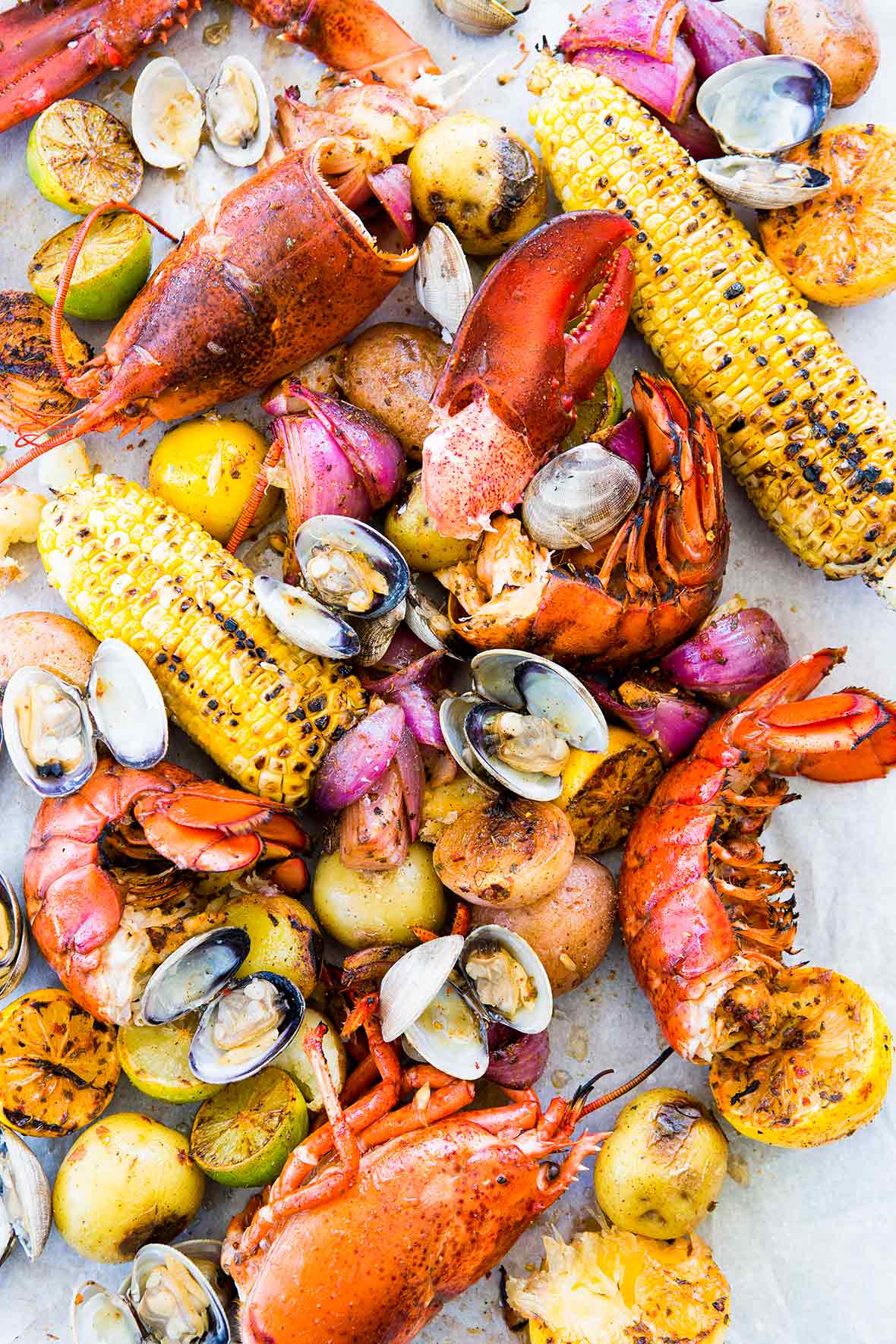
This New England clambake, made with clams, lobster, Old Bay, sweet corn, and potatoes, is a summer classic that’s easy to make at home. No sand or surf required. Valerie Aikman-Smith
New England Clambake
- Ingredients:
- 1 (1 1/4- to 1 1/2-pound) live lobster
- 1 cup buttery cracker crumbs, such as Ritz or Club
- 2 tablespoons butter, melted, plus more for serving if desired
- 2 tablespoons minced celery
- 2 tablespoons minced sweet onion
- 2 tablespoons freshly grated Parmesan cheese, divided
- 1/2 teaspoon garlic powder
- 1/4 teaspoon lemon pepper
- Dash of salt, or to taste
- Dash of sweet Hungarian paprika
Directions
- Gather the ingredients. Preheat the oven to 400 F.
- To instantly kill the lobster, place the lobster flat on a cutting board and plunge the tip of a sharp knife straight down just behind the lobster’s eyes to cut the spinal cord. (Alternatively, you can freeze the lobster for 30 to 60 minutes.)
- Flip the lobster over on its back. Using a sharp knife or kitchen shears, cut the lobster’s body cavity open all the way down to the end of the tail but not all the way through.
- Remove and reserve the tomalley (yellowish-green colored liver).
- Remove the stomach and intestines, being careful not to rupture them, and discard.
- Remove the stomach and intestines, being careful not to rupture them, and discard.
- In a mixing bowl, combine the cracker crumbs, melted butter, celery, onion, 1 tablespoon of the Parmesan cheese, garlic powder, lemon pepper, and salt to taste.
- Add the tomalley from the lobster and mix gently.
- Pack the cracker mixture into the lobster’s body cavity.
- Sprinkle with the remaining tablespoon of Parmesan cheese and dust lightly with paprika.
- Bake the stuffed lobster in an uncovered 2-inch-deep baking pan for 30 minutes. If needed, place under the broiler and broil for another 2 minutes to brown the stuffing. Serve the stuffed lobster imme

How to make an authentic New England Lobster Roll!
INSTRUCTIONS:
- Place the cooked lobster meat in large bowl.
- In a separate, smaller bowl combine the mayonnaise, lemon juice, celery, parsley, scallion, hot sauce, and salt and pepper. Mix and taste for seasoning. Once you have the seasoning to your liking, add to the cooked lobster meat and mix.
- Brush both sides of rolls with butter and toast both sides in a medium fry pan over medium heat until nicely browned.
- Divide the lobster salad between each roll per your preference. Some serve lettuce under the lobster salad but we like it without, your choice.
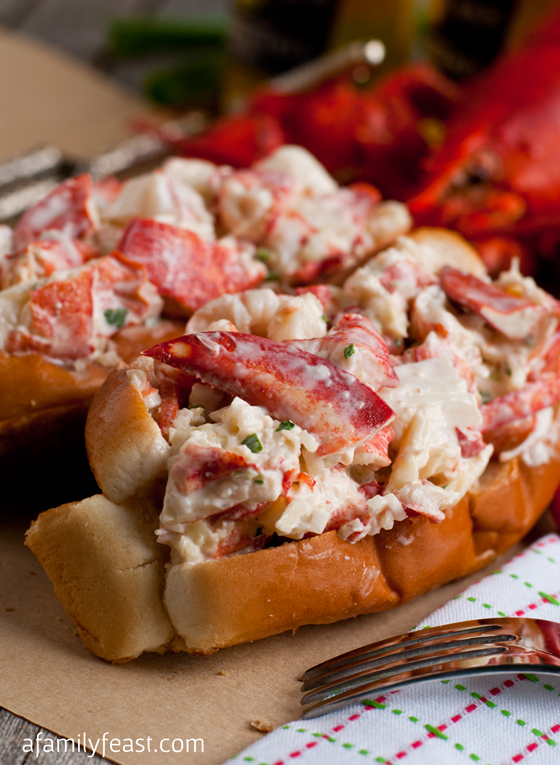
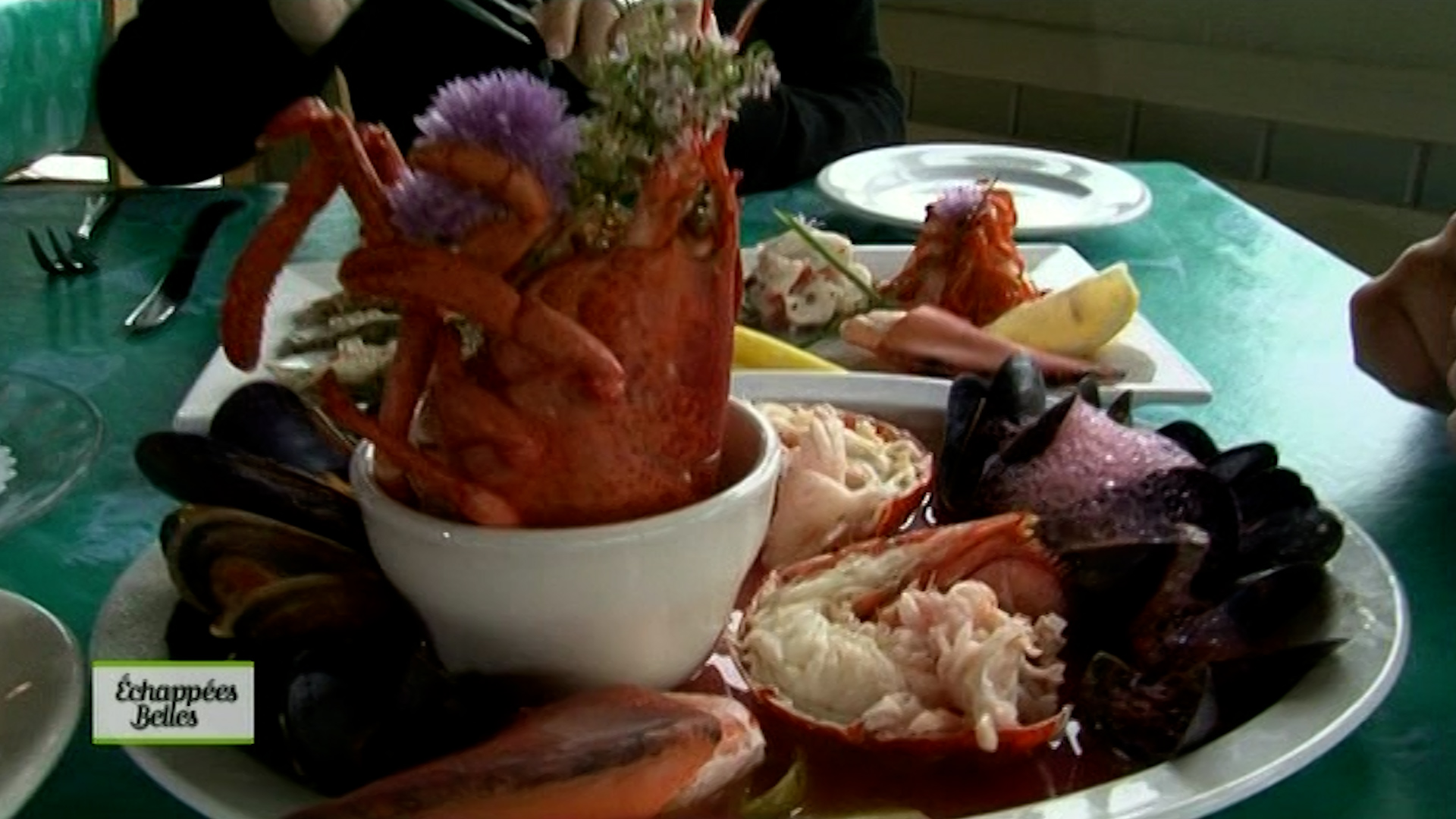

Picking fresh fish
Fresh fish is firm and smells clean. The fish’s eyes should not be sunken in the socket, and should be clear and bright. The scales should be shiny, and the gills should be bright red. If the fish has been caught very recently its head will be turned towards the tail, giving the fish a semicircular appearance.
Preparation
Remove the gills. Scale the fish, using a knife with a strong blade, scraping against the direction of the scales. Next make a short incision in the belly to allow you to remove the fish’s entrails. Remove the line of blood that has coagulated along the backbone. Now trim the fins and tail using a strong pair of shears. Use caution when performing this step, as the fins may be sharp. The sting of certain fish may be painful and even dangerous. Finally, wash the fish inside and out with cool running water, wipe dry with a cloth, and keep in a cool place
Cooking Methods
Cooking in Court-bouillon
After the fish has been prepared, place it in a pot large enough to fit the fish comfortably. Pour in one of the cold court-bouillons (recipes follow) to reach 2 inches above the fish. Bring rapidly to a boil and then immediately reduce the flame. The fish should be poached at a gentle simmer. If it continues to boil rapidly, the fish will lose its shape and break up. If fish is cut into slices before cooking, they should be no smaller than 1 ½ inches thick. Drop pieces into court-bouillon after it has begun to boil to keep the fish from losing its juices and flavor.
You will never be happy if you continue to search for what happiness consists of. You will never live if you are looking for the meaning of life.
Ingredients
White court-bouillon
3 ½ qts water
1 cup vinegar
3 Ts salt
4 sliced lemons, peeled and seeded
Court-bouillon with vinegar
3 ½ qts water
1 cup vinegar
3 Ts salt
2 medium-sized carrots
2 large onions, thinly sliced
Few sprigs parsley
Sprig of thyme
½ bay leaf
Pinch crushed peppercorns
Bring all ingredients except peppercorns to a boil. Lower heat and simmer for 30 minutes. Add peppercorns and continue to simmer for 10 minutes. Strain through a fine sieve. Cool liquid before pouring over fish to be cooked.
Court-bouillon with white wine
Use the court-bouillon with vinegar recipe but omit vinegar and reduce water to 1 ¾ quarts. Add 1 ¾ quarts dry white wine. Cook as above.
Court-bouillon with red wine
Use the court-bouillon with vinegar recipe but replace all the water with 3½ quarts good red wine. Simmer for 40 minutes on a low flame.
Braising Fish
Braising is usually used for whole or large pieces of fish. The pot should be the same size as the fish. The bottom of the pot should be buttered thickly and covered with the usual seasonings: carrots, onions, shallots, and mushrooms, all cut very thin. Then season the fish on both sides with salt and pepper, and place it on top the vegetables. Cover fish to ¾ of its thickness with one part red or white wine and one part strong fish stock known as a fumet. Bring it to a boil over a high flame, and then continue cooking in a 425 degree oven, partially covered so the liquid can evaporate very slowly. The fish should be basted often.
As the stock reduces, it becomes more flavorful; the frequent basting gives the fish a brilliant coating that takes on a nice golden brown color and a pleasant taste.
When the fish is cooked, carefully drain it and place on a serving platter. Cover to keep warm. The vegetables cooked with the fish are strained, degreased, reduced if necessary, and finished according to the recipe chosen.
Poaching Fish
This method is one of the simplest and most satisfactory. Thickly butter a heavy bottomed pot the same size as the fish to be cooked. In the bottom of the pot sprinkle the condiments or the ingredients specified in the recipe you have chosen. Season the fish on both sides and place it on top or the condiments. Cover the fish with wine or fish stock. Cut a piece of butter into pieces about ¼ inch thick and spread them over the fish. Bring to a boil, then cook in a 450 degree oven, basting often.
When the fish is cooked, it is usually drained. The cooking juices are used as the main ingredient in the sauce that will accompany the fish. Follow the chosen recipe to finish the dish.
Broiling Fish
For broiling, fish should be small or medium-sized. If the fish is medium-sized make shallow incisions on both sides crosswise to help the heat penetrate the flesh. The heat of the grill (charcoal, gas, electric) should be adjusted according to the thickness of the fish. If the outside of the fish is exposed to too high a heat, it will form a protective seal and the inside of the fish will not cook. A whole fish that tapers toward the tail should be exposed to the heat so that it will cook evenly.
Frying Fish
The ideal oil for frying is one that can get as hot as 575 degrees without burning (peanut, canola, vegetable.) If frying a whole fish score both sides to help the heat penetrate the flesh. Flour or batter the fish according to the recipe chosen. There should be enough oil so that the fish can be totally immersed. The temperature of the oil should be governed by the thickness of the fish. Fish less than 1 inch thick should be fried at around 350 degrees, whereas fish more than 1 inch thick should be fried in oil heated to 250-275 degrees. Keep in mind that when fish is added to the frying oil the temperature of the oil will drop. Allow enough time between each frying to restore proper oil temperature. After each use strain the oil through cloth to remove any remaining particles of flour, breadcrumbs, etc. used to coat the fish before frying.
History of Fishing
Fishing is the activity of catching fish. It has a history of over 35,000 years and may be an individual necessity or a collective undertaking involving large groups of men. Since the 16th century fishing vessels have been able to cross oceans in pursuit of fish and since the 19th century it has been possible to use larger vessels and in some cases process the fish on board. Fish are normally caught in the wild. Techniques for catching fish include hand gathering, spearing, netting, angling and trapping.
The term fishing may be applied to catching other aquatic animals such as shellfish, cephalopods, crustaceans, and echinoderms. The term is not usually applied to catching aquatic mammals, such as whales, where the term whaling is more appropriate, or to farmed fish. In addition to providing food, modern fishing is also a recreational sport.
According to FAO statistics, the total number of fishermen and fish farmers is estimated to be 38 million. Fisheries and aquaculture provide direct and indirect employment to over 500 million people. In 2005, the worldwide per capita consumption of fish captured from wild fisheries was 14.4 kilograms, with an additional 7.4 kilograms harvested from fish farms.
Fishing is an ancient practice that dates back at least to the Upper Paleolithic period which began about 40,000 years ago. Isotopic analysis of the skeletal remains of Tianyuan man, a 40,000 year old modern human from eastern Asia, has shown that he regularly consumed freshwater fish. Archaeological features such as shell middens,[7] discarded fish bones and cave paintings show that sea foods were important for survival and consumed in significant quantities. During this period, most people lived a hunter-gather lifestyle and were, of necessity, constantly on the move. However, where there are early examples of permanent settlements (though not necessarily permanently occupied) such as those at Lepenski Vir, they are almost always associated with fishing as a major source of food.
Spearfishing with barbed poles (harpoons) was widespread in palaeolithic times.[8] Cosquer cave in Southern France contains cave art over 16,000 years old, including drawings of seals which appear to have been harpooned.
The Neolithic culture and technology spread worldwide between 4,000 and 8,000 years ago. With the new technologies of farming and pottery came basic forms of all the main fishing methods that are still used today.
In the time epoch 7500 to 3000 years before present, Native Americans of the California coast were known to engage in fishing with gorge hook and line tackle. In addition, some tribes are known to have used plant toxins to induce torpor in stream fish to enable their capture.[10]
Copper harpoons were known to the seafaring Harappans well into antiquity. Early hunters in India include the Mincopie people, aboriginal inhabitants of India’s Andaman and Nicobar islands, who have used harpoons with long cords for fishing since early times.
The ancient river Nile was full of fish; fresh and dried fish were a staple food for much of the population. The Egyptians invented various implements and methods for fishing and these are clearly illustrated in tomb scenes, drawings, and papyrus documents. Simple reed boats served for fishing. Woven nets, weir baskets made from willow branches, harpoons and hook and line (the hooks having a length of between eight millimetres and eighteen centimetres) were all being used. By the 12th dynasty, metal hooks with barbs were being used. As is fairly common today, the fish were clubbed to death after capture. Nile perch, catfish and eels were among the most important fish. Some representations hint at fishing being pursued as a pastime.
There are numerous references to fishing in ancient literature; in most cases, however, the descriptions of nets and fishing-gear do not go into detail, and the equipment is described in general terms. An early example from the Bible in Job 41:7: Canst thou fill his skin with barbed irons? or his head with fish spears?
Fishing with nets, tacuinum sanitatis casanatensis (XIV century)
Fishing scenes are rarely represented in ancient Greek culture, a reflection of the low social status of fishing. There is a wine cup, dating from c. 500 BC, that shows a boy crouched on a rock with a fishing-rod in his right hand and a basket in his left. In the water below there is a rounded object of the same material with an opening on the top. This has been identified as a fish-cage used for keeping live fish, or as a fish-trap. It is clearly not a net. This object is currently in the Museum of Fine Arts, Boston.[15]
Oppian of Corycus, a Greek author wrote a major treatise on sea fishing, the Halieulica or Halieutika, composed between 177 and 180. This is the earliest such work to have survived intact to the modern day. Oppian describes various means of fishing including the use of nets cast from boats, scoop nets held open by a hoop, spears and tridents, and various traps “which work while their masters sleep”. Oppian’s description of fishing with a “motionless” net is also very interesting:
The fishers set up very light nets of buoyant flax and wheel in a circle round about while they violently strike the surface of the sea with their oars and make a din with sweeping blow of poles. At the flashing of the swift oars and the noise the fish bound in terror and rush into the bosom of the net which stands at rest, thinking it to be a shelter: foolish fishes which, frightened by a noise, enter the gates of doom. Then the fishers on either side hasten with the ropes to draw the net ashore.
The Greek historian Polybius (ca 203 BC–120 BC), in his Histories, describes hunting for swordfish by using a harpoon with a barbed and detachable head.
Pictorial evidence of Roman fishing comes from mosaics which show fishing from boats with rod and line as well as nets. Various species such as conger, lobster, sea urchin, octopus and cuttlefish are illustrated.[17] In a parody of fishing, a type of gladiator called retiarius was armed with a trident and a casting-net. He would fight against the murmillo, who carried a short sword and a helmet with the image of a fish on the front.
The Greco-Roman sea god Neptune is depicted as wielding a fishing trident.
In India, the Pandyas, a classical Dravidian Tamil kingdom, were known for the pearl fishery as early as the 1st century BC. Their seaport Tuticorin was known for deep sea pearl fishing. The paravas, a Tamil caste centred in Tuticorin, developed a rich community because of their pearl trade, navigation knowledge and fisheries.
In Norse mythology the sea giantess Rán uses a fishing net to trap lost sailors.
The Moche people of ancient Peru depicted fisherman in their ceramics.
From ancient representations and literature it is clear that fishing boats were typically small, lacking a mast or sail, and were only used close to the shore.
In traditional Chinese history, history begins with three semi-mystical and legendary individuals who taught the Chinese the arts of civilization around 2800�2600 BC: of these Fu Hsi was reputed to be the inventor of writing, hunting, trapping, and fishing.
Gillnetting began with First Nations fishermen using canoes and cedar fibre nets. They would attach stones to the bottom of the nets as weights, and pieces of wood to the top, to use as floats. This allowed the net to suspend straight up and down in the water. Each net would be suspended either from shore or between two boats. Native fishers in the Pacific Nortwest, Canada, and Alaska still commonly use gillnets in their fisheries for salmon and steelhead.
By around 1864, gillnetting had expanded to European, Japanese, and other international fisheries. The boats used by these fisherman were typically around 25 feet (8 m) long and powered by oars. Many of these boats also had small sails and were called “row-sail” boats. At the beginning of the 1900s, steam powered ships would haul these smaller boats to their fishing grounds and retrieve them at the end of each day. However, at this time gas powered boats were beginning to make their appearance, and by the 1930s, the row-sail boat had virtually disappeared.
In 1931, the first powered drum was created by Laurie Jarelainen. The drum is a circular device that is set to the side of the boat and draws in the nets. The powered drum allowed the nets to be drawn in much faster and along with the faster gas powered boats, fisherman were able to fish in areas they had previously been unable to go into, thereby revolutionizing the fishing industry.
During World War II, navigation and communication devices, as well as many other forms of maritime equipment (ex. depth-sounding and radar) were improved and made more compact. These devices became much more accessible to the average fisherman, thus making their range and mobility increasingly larger. It also served to make the industry much more competitive, as the fisherman were forced to invest more into their boats and equipment in order to stay up to date with the current technology.
The introduction of fine synthetic fibres such as nylon in the construction of fishing gear during the 1960s marked an expansion in the commercial use of gillnets. The new materials were cheaper and easier to handle, lasted longer and required less mainatenance than natural fibres. In addition, fibres such as nylon monofilaments become almost invisible in water, so nets made with synthetic twines generally caught greater numbers of fish than natural fibre nets used in comparable situations.
Nylon is highly resistant to abrasion, hence the netting has the potential to last for many years if it is not recovered. This ghost fishing is of environmental concern, however it is difficult to generalise about the longevity of ghost-fishing gillnets due to the varying environments in which they are used. Some researchers have found gill-nets to be still catching fish and crustaceans for over a year after loss, while others have found lost nets to be destroyed by wave action within one month or overgrown with seaweeds, increasing their visibility and reducing their catching potential to such an extent that they became a microhabitat used by small fishes
This type of net was heavily used by many Japanese, South Korean, and Taiwanese fishing fleets on the high seas in the 1980s to target tunas. Although highly selective with respect to size class of animals captured, gill nets are associated with high numbers of incidental captures of cetaceans, (whales and dolphins). In the Sri Lankan gill net fishery, one dolphin is caught for every 1.7-4.0 tonnes of tuna landed. This compares poorly with the rate of one dolphin per 70 tonnes of tuna landed in the eastern Pacific purse seine tuna fishery. Gillnets were banned by the United Nations in 1993 in international waters, although their use is still permitted within 200 nautical miles (400 km) of a coast.
Gillnetting began with First Nations fishermen using canoes and cedar fibre nets. They would attach stones to the bottom of the nets as weights, and pieces of wood to the top, to use as floats. This allowed the net to suspend straight up and down in the water. Each net would be suspended either from shore or between two boats. Native fishers in the Pacific Nortwest, Canada, and Alaska still commonly use gillnets in their fisheries for salmon and steelhead.
By around 1864, gillnetting had expanded to European, Japanese, and other international fisheries. The boats used by these fisherman were typically around 25 feet (8 m) long and powered by oars. Many of these boats also had small sails and were called “row-sail” boats. At the beginning of the 1900s, steam powered ships would haul these smaller boats to their fishing grounds and retrieve them at the end of each day. However, at this time gas powered boats were beginning to make their appearance, and by the 1930s, the row-sail boat had virtually disappeared.
In 1931, the first powered drum was created by Laurie Jarelainen. The drum is a circular device that is set to the side of the boat and draws in the nets. The powered drum allowed the nets to be drawn in much faster and along with the faster gas powered boats, fisherman were able to fish in areas they had previously been unable to go into, thereby revolutionizing the fishing industry.
During World War II, navigation and communication devices, as well as many other forms of maritime equipment (ex. depth-sounding and radar) were improved and made more compact. These devices became much more accessible to the average fisherman, thus making their range and mobility increasingly larger. It also served to make the industry much more competitive, as the fisherman were forced to invest more into their boats and equipment in order to stay up to date with the current technology.
The introduction of fine synthetic fibres such as nylon in the construction of fishing gear during the 1960s marked an expansion in the commercial use of gillnets. The new materials were cheaper and easier to handle, lasted longer and required less mainatenance than natural fibres. In addition, fibres such as nylon monofilaments become almost invisible in water, so nets made with synthetic twines generally caught greater numbers of fish than natural fibre nets used in comparable situations.
Nylon is highly resistant to abrasion, hence the netting has the potential to last for many years if it is not recovered. This ghost fishing is of environmental concern, however it is difficult to generalise about the longevity of ghost-fishing gillnets due to the varying environments in which they are used. Some researchers have found gill-nets to be still catching fish and crustaceans for over a year after loss, while others have found lost nets to be destroyed by wave action within one month or overgrown with seaweeds, increasing their visibility and reducing their catching potential to such an extent that they became a microhabitat used by small fishes
This type of net was heavily used by many Japanese, South Korean, and Taiwanese fishing fleets on the high seas in the 1980s to target tunas. Although highly selective with respect to size class of animals captured, gill nets are associated with high numbers of incidental captures of cetaceans, (whales and dolphins). In the Sri Lankan gill net fishery, one dolphin is caught for every 1.7-4.0 tonnes of tuna landed. This compares poorly with the rate of one dolphin per 70 tonnes of tuna landed in the eastern Pacific purse seine tuna fishery. Gillnets were banned by the United Nations in 1993 in international waters, although their use is still permitted within 200 nautical miles (400 km) of a coast.
Trepanging is the collection or harvesting of sea cucumbers, also called “trepang”. One who does this activity is called a trepanger.
To supply the markets of Southern China, Muslim trepangers from Makassar, Indonesia traded with the Indigenous Australians of Arnhem Land from the early 1700s or before. This Macassan contact with Australia is the first recorded example of interaction between the inhabitants of the Australian continent and their Asian neighbours.
This contact had a major impact on the Indigenous Australians. The Macassans exchanged goods such as cloth, tobacco, knives, rice and alcohol for the right to trepang coastal waters and employ local labour. Macassan pidgin became a lingua franca along the north coast among different Indigenous Australian groups who were brought into greater contact with each other by the seafaring Macassan culture.
Remains of Macassan trepang processing plants from the 18th and 19th centuries can still be found at Australian locations such as Port Essington and Groote Eylandt, along with stands of tamarind trees (which are native to Madagascar and East Africa) introduced by the seafaring Muslims.
You will never be happy if you continue to search for what happiness consists of. You will never live if you are looking for the meaning of life.
Chinese fishermen in Monterey, California
Countless experienced Chinese fishermen came from China’s Pearl River Delta region to the California coast in the 1850s. They founded a fishing economy which grew exponentially, extending along the whole of the West Coast of the United States from Canada to Mexico by the 1880s. With entire fleets of small boats (sampans; 舢舨) the Chinese fishermen caught herring, soles, smelts, cod, sturgeon, and shark in the sea. To catch the larger fish like the barracudas, they used Chinese junks, which were built in large numbers on the American west coast. Among the yield caught by the Chinese American fishermen also included crabs, clams, abalone, salmon, and seaweed – all of which, including shark, formed the staple of Chinese cuisine. The produce were then sold in the local markets or shipped salt-dried for East Asia and Hawaii.
Again this initial success was met with a hostile reaction. Since the late 1850s, European migrants – above all Greeks, Italians and Dalmatians – moved into fishing off the American west coast too, and they exerted pressure on the California legislature, which, finally, expelled the Chinese fishermen with a whole array of taxes, laws and regulations. They had to pay special taxes (Chinese Fisherman’s Tax), and they were not allowed to fish with traditional Chinese nets nor with junks. The most disastrous effect occurred when the Scott Act, a federal US law adopted in 1888, established that the Chinese migrants, even when they had entered and were living the US legally, could not re-enter after having temporarily left US territory. The Chinese fishermen, in effect, could therefore not leave with their boats the 3-mile (4.8 km) zone of the west coast. Their work became unprofitable, and gradually they gave up fishing. The only area where the Chinese fishermen remained unchallenged was shark fishing, where they stood in no competition to the European-Americans. Many former fishermen found work in the salmon canneries which until the 1930s were major employers of Chinese migrants, because white workers were barely interested in engaging in such hard, seasonal and relatively unrewarding activities.
The earliest English essay on recreational fishing was published in 1496, shortly after the invention of the printing press. The authorship of this was attributed to Dame Juliana Berners, the prioress of the Benedictine Sopwell Nunnery. The essay was titled Treatyse of Fysshynge wyth an Angle, and was published in the second Boke of St Albans, a treatise on hawking, hunting and heraldry. These were major interests of the nobility, and the publisher, Wynkyn de Worde, was concerned that the book should be kept from those who were not gentlemen, since their immoderation in angling might “utterly destroye it”.
During the 16th century the work was much read, and was reprinted many times. Treatyse includes detailed information on fishing waters, the construction of rods and lines, and the use of natural baits and artificial flies. It also includes modern concerns about conservation and angler etiquette.
Recreational fishing for sport or leisure took off during the 16th and 17th centuries, and coincides with the publication of Izaak Walton’s The Compleat Angler, or Contemplative Man’s Recreation in 1653. This book is the definitive work that champions the position of the angler who loves fishing for the sake of fishing.
More than 300 editions of The Compleat Angler have been published, which makes it one of the most frequently reprinted books in English literature. The pastoral discourse is enriched with country fishing folklore, songs and poems, recipes and anecdotes, moral meditations and quotes from classic literature. The central character, Piscator, champions the art of angling, but also tranquilly relishes the pleasures of friendship, verse and song, good food and drink.
Big-game fishing started as a sport after the invention of the motorized boat. In 1898, Dr. Charles Frederick Holder, a marine biologist and early conservationist, virtually invented this sport and went on to publish many articles and books on the subject noted for their combination of accurate scientific detail with exciting narratives.
“Angler on a Wintry Lake,” painted in 1195 by Ma Yuan, featuring the oldest known depiction of a fishing reel, although the oldest description of a fishing reel in China dates to the 3rd century AD
In literary records, the earliest evidence of the fishing reel comes from a 4th century AD work entitled Lives of Famous Immortals. The earliest known depiction of a fishing reel comes from a Southern Song (1127–1279) painting done in 1195 by Ma Yuan (c. 1160–1225) called “Angler on a Wintry Lake,” showing a man sitting on a small sampan boat while casting out his fishing line. Another fishing reel was featured in a painting by Wu Zhen (1280–1354). The book Tianzhu lingqian (Holy Lections from Indian Sources), printed sometime between 1208 and 1224, features two different woodblock print illustrations of fishing reels being used. An Armenian parchment Gospel of the 13th century shows a reel (though not as clearly depicted as the Chinese ones). The Sancai Tuhui, a Chinese encyclopedia published in 1609, features the next known picture of a fishing reel and vividly shows the windlass pulley of the device. These five pictures mentioned are the only ones which feature fishing reels before the year 1651 (when the first English illustration was made); after that year they became commonly depicted in world art.
Fly fishing
Many credit the first recorded use of an artificial fly to the Roman Claudius Aelianus near the end of the 2nd century. He described the practice of Macedonian anglers on the Astraeus River:
…they have planned a snare for the fish, and get the better of them by their fisherman’s craft. . . . They fasten red . . . wool round a hook, and fit on to the wool two feathers which grow under a cock’s wattles, and which in colour are like wax. Their rod is six feet long, and their line is the same length. Then they throw their snare, and the fish, attracted and maddened by the colour, comes straight at it, thinking from the pretty sight to gain a dainty mouthful; when, however, it opens its jaws, it is caught by the hook, and enjoys a bitter repast, a captive.
In his book Fishing from the Earliest Times, however, William Radcliff (1921) gave the credit to Martial (Marcus Valerius Martialis), born some two hundred years before Aelian, who wrote:
…Who has not seen the scarus rise, decoyed and killed by fraudful flies…
The last word, somewhat indistinct in the original, is either “mosco” (moss) or “musca” (fly) but catching fish with fraudulent moss seems unlikely.
Japan
Tenkara fishing is a type of recreational fly-fishing that originated in Japan at least as long as 430 years ago, when anglers discovered they could dress their flies with pieces of fabric and use those to fool the fish. The art became more refined as the samurai, who were forbidden to practice martial arts and sword fighting in the Edo period, found this type of fishing to be a good substitute for their training: the rod being a substitute to the sword, and walking on the rocks of a small stream good leg and balance training. “Only the samurai were permitted to do it [fish]. So, the samurai who enjoyed ayu fishing would take sewing needles and bend them themselves, and make their own flies by hand.”. Nowadays, these rods along with fishing flies, are considered to be a traditional local craft of the Kaga region. The Meboso family in Kanazawa has been making these flies for as long as 400 years themselves, and are currently a 20-generation fly-tiers.
United Kingdom
Modern western fly fishing is normally said to have originated on the fast, rocky rivers of Scotland and northern England. Other than a few fragmented references, however, little was written on fly fishing until The Treatyse on Fysshynge with an Angle was published (1496) within The Boke of St. Albans attributed to Dame Juliana Berners. The book contains, along with instructions on rod, line and hook making, dressings for different flies to use at different times of the year. The first detailed writing about the sport comes in two chapters of Izaak Walton’s Compleat Angler, which were actually written by his friend Charles Cotton, and described the fishing in the Derbyshire Wye.
British fly-fishing continued to develop in the 19th Century, with the emergence of fly fishing clubs, along with the appearance of several books on the subject of fly tying and fly fishing techniques. In southern England, dry-fly fishing acquired an elitist reputation as the only acceptable method of fishing the slower, clearer rivers of the south such as the River Test and the other ‘chalk streams’ concentrated in Hampshire, Surrey, Dorset and Berkshire (see Southern England Chalk Formation for the geological specifics). The weeds found in these rivers tend to grow very close to the surface, and it was felt necessary to develop new techniques that would keep the fly and the line on the surface of the stream. These became the foundation of all later dry-fly developments. However, there was nothing to prevent the successful employment of wet flies on these chalk streams, as George E.M. Skues proved with his nymph and wet fly techniques. To the horror of dry-fly purists, Skues later wrote two books, Minor Tactics of the Chalk Stream, and The Way of a Trout with the Fly, which greatly influenced the development of wet fly fishing. In northern England and Scotland, many anglers also favored wet-fly fishing, where the technique was more popular and widely practised than in southern England. One of Scotland’s leading proponents of the wet fly in the early-to-mid 19th century was W.C. Stewart, who published “The Practical Angler” in 1857.
Scandinavia
In Scandinavia and the United States, attitudes toward methods of fly fishing were not nearly as rigidly defined, and both dry- and wet-fly fishing were soon adapted to the conditions of those countries.
Lines made of silk replaced those of horse hair and were heavy enough to be cast in the modern style. Cotton and his predecessors fished their flies with long rods, and light lines allowing the wind to do most of the work of getting the fly to the fish. The introduction of new woods to the manufacture of fly rods, first greenheart and then bamboo, made it possible to cast flies into the wind on silk lines. These early fly lines proved troublesome as they had to be coated with various dressings to make them float and needed to be taken off the reel and dried every four hours or so to prevent them from becoming waterlogged.
United States
American rod builders such as Hiram Leonard developed superior techniques for making bamboo rods: thin strips were cut from the cane, milled into shape, and then glued together to form light, strong, hexagonal rods with a solid core that were superior to anything that preceded them.
Fly reels were soon improved, as well. At first they were rather mechanically simple; more or less a storage place for the fly line and backing. In order to tire the fish, anglers simply applied hand pressure to the rim of the revolving spool, known as ‘palming’ the rim. (See Fishing reel). In fact, many superb modern reels still use this simple design.
In the United States, fly fishermen are thought to be the first anglers to have used artificial lures for bass fishing. After pressing into service the fly patterns and tackle designed for trout and salmon to catch largemouth and smallmouth bass, they began to adapt these patterns into specific bass flies. Fly fishermen seeking bass developed the spinner/fly lure and bass popper fly, which are still used today.
In the late 19th century, American anglers, such as Theodore Gordon, in the Catskill Mountains of New York began using fly tackle to fish the region’s many brook trout-rich streams such as the Beaverkill and Willowemoc Creek. Many of these early American fly fishermen also developed new fly patterns and wrote extensively about their sport, increasing the popularity of fly fishing in the region and in the United States as a whole. The Junction Pool in Roscoe, where the Willowemoc flows into the Beaver Kill, is the center of an almost ritual pilgrimage every April 1, when the season begins. Albert Bigelow Paine, a New England author, wrote about fly fishing in The Tent Dwellers, a book about a three week trip he and a friend took to central Nova Scotia in 1908.
Participation in fly fishing peaked in the early 1920s in the eastern states of Maine and Vermont and in the Midwest in the spring creeks of Wisconsin. Along with deep sea fishing, Ernest Hemingway did much to popularize fly fishing through his works of fiction, including The Sun Also Rises. It was the development of inexpensive fiberglass rods, synthetic fly lines, and monofilament leaders, however, in the early 1950s, that revived the popularity of fly fishing, especially in the United States.
In recent years, interest in fly fishing has surged as baby boomers have discovered the sport. Movies such as Robert Redford’s film A River Runs Through It, starring Brad Pitt, cable fishing shows, and the emergence of a competitive fly casting circuit have also added to the sport’s visibility.
The Magic of Swiss Fondue
Ah, fondue—that word alone is like a warming embrace, evoking the rustic beauty of Swiss mountains and the deep-rooted camaraderie that only a pot of melted goodness can inspire. But let me take you beyond the classic Gruyère and Vacherin bubbling away in a ceramic caquelon. There are other fondues, just as charming, waiting to bring people together in laughter and conversation, each with its own story and personality—the kind of dishes that turn simple evenings into lifelong memories.
Fondue and the Days of Modest Living
In the days when I worked in Swiss establishments, fondue was often on the menu, yet it wasn’t until I had a place of my own that I truly understood its magic. Back then, my living arrangements were… well, modest, to say the least. Imagine a tiny room tucked in the attic of a chalet, or a spare room provided by a local family who also happened to be my employer. No stove, no fridge—just a bed and a window framing the Alps. And honestly? We didn’t spend much time there. We were young, working in hotels and restaurants, and life revolved around the rhythm of shifts, the chatter of locker rooms, and the clink of glasses shared in smoky bars where we celebrated surviving another evening service. Our kitchens were the hotel kitchens; our dining rooms were the grand halls where we served guests but never ourselves.
The summers found us sleeping beneath the stars by the local pools, while winters drove us to the warmth of the cafés. Our nightlife? It was a delightful blur of barstools, dim lighting, and loud laughter—peppered with the endless chase for adventure and romance. Ah, we were foolish and bold, chasing after life as if it were a mischievous goat on an Alpine hillside. Clean living was something reserved for the tourists; we were busy living invincibly, with the invincible recklessness that youth often mistakes for immortality.
A Kitchen of My Own
But I digress—perhaps I’ve spilled a bit too much of my own story onto the table. Let’s get back to the matter at hand: the kind of fondue that draws friends close, that kindles warmth even on the frostiest of nights. It wasn’t until later, when I finally settled into an apartment of my own—in Lakeway, as an executive chef no less—that I began to fully understand what a home-cooked fondue could do for the spirit. No longer was I drifting from one employer’s room to another; instead, I had a kitchen that was mine. A space that I could fill with laughter, the scent of garlic, wine, and melting chocolate. It was in that kitchen that I became the host, the ringmaster of intimate gatherings where friends dipped and laughed, sharing stories over a simmering pot.
Fondue Recipes to Share
So now, let me introduce you properly to these fondues that I’ve come to love. The recipes I’m about to share are not just instructions—they’re the very essence of hospitality, gathered over years of moving and making homes wherever I could. They are the Chocolate Fondue, the Fondue Chinoise (a broth-based wonder perfect for tender beef slices), and the Fondue Bourguignonne (for those who love a good, sizzling bite). These are dishes meant to be savored slowly, meant to bring people together just as they did for me, as they still do, wherever I find myself next.
Embrace the Tradition
So pull up a chair, gather your friends, and prepare to dip into something far richer than just a pot of cheese or chocolate—dip into a tradition, a story, a sense of togetherness that the Swiss have known for centuries. And maybe, just maybe, you’ll taste a bit of the mountain air, the laughter of old friends, and the warmth of a true home.
Swiss Culinary Classics: The Fondue Collection
1. Chocolate Fondue
A Taste of Swiss Sweetness
Chocolate fondue, a celebration of Switzerland’s famed chocolate-making tradition, captures the romantic spirit of gathering around a communal pot of melted chocolate. Originally a creation of Swiss tourism boards in the 1960s to boost winter travel, chocolate fondue has become a globally cherished treat, synonymous with indulgence and shared experience. The Swiss, known for their impeccable chocolate craft, have made this dessert iconic.
Ingredients
300 g high-quality Swiss dark chocolate (70% cocoa)
100 ml heavy cream
2 tbsp Kirsch (cherry brandy), optional
1 tsp vanilla extract
Assorted dippers: strawberries, banana slices, pineapple chunks, marshmallows, and cubes of brioche or pound cake
Preparation
Prepare the Fondue Pot: Use a fondue pot or a heatproof ceramic bowl over a low heat source. Ensure the pot is dry before use, as even a drop of water can cause the chocolate to seize.
Melt the Chocolate: Break the dark chocolate into small, even pieces to ensure uniform melting. In a saucepan over low heat, warm the heavy cream until small bubbles form along the edge (do not boil). Gradually add the chocolate pieces, stirring constantly until smooth and completely melted.
Add Flavorings: Stir in the Kirsch and vanilla extract for extra depth of flavor. Continue to stir until everything is well combined.
Transfer to Fondue Pot: Pour the melted chocolate into the prepared fondue pot and keep it warm using a low flame or tealight.
Dip and Enjoy: Arrange the dippers on a platter. Spear each piece with a fondue fork or skewer, dip into the luscious chocolate, and enjoy immediately.
Serving Suggestions
Chocolate fondue is best enjoyed after a hearty meal, accompanied by a glass of sweet wine such as Moscato or a light Riesling. For a non-alcoholic option, pair it with a rich hot chocolate or a peppermint tea.
Gert’s Tips
Chocolate Quality: Use the best quality chocolate you can find—Swiss brands such as Lindt or Toblerone are ideal. Low-quality chocolate may result in a grainy texture.
Consistency: If the mixture is too thick, add a little more warm cream until you reach the desired consistency. If it is too thin, melt in a bit more chocolate.
Substitutions: For a dairy-free version, use coconut cream instead of heavy cream and dairy-free chocolate.
2. Fondue Chinoise (Beef Fondue)
A Feast of Swiss Hospitality
Fondue Chinoise, despite its name, is a quintessential Swiss tradition for family gatherings and celebrations, especially at Christmas or New Year’s Eve. Inspired by Chinese hotpot, this dish involves cooking thinly sliced beef in a rich, flavorful broth. The experience of dipping and cooking at the table emphasizes the Swiss emphasis on social dining and togetherness.
Ingredients
1 liter beef broth
500 g beef tenderloin, thinly sliced
100 g mushrooms, sliced
100 g pearl onions
1 carrot, sliced
1 bay leaf
1 tsp black peppercorns
Assorted dipping sauces (e.g., garlic aioli, curry sauce, cocktail sauce)
Accompaniments: boiled potatoes, pickles, and bread
Preparation
Prepare the Broth: In a large saucepan, bring the beef broth to a gentle boil. Add the bay leaf, black peppercorns, sliced mushrooms, pearl onions, and carrots. Let the broth simmer for 10-15 minutes to develop flavor.
Set Up the Fondue Pot: Transfer the hot broth to a fondue pot and place it on a burner in the center of the table, ensuring it stays at a gentle simmer.
Arrange the Meat and Vegetables: Thinly slice the beef tenderloin (it is easier if the meat is partially frozen) and arrange it on a platter. Place the sliced vegetables and dipping sauces in small bowls around the table.
Cooking the Meat: Guests can spear pieces of beef with fondue forks and cook them in the simmering broth for 30 seconds to 1 minute, depending on their preference. Vegetables can also be cooked in the same manner.
Serving Suggestions
Serve Fondue Chinoise with boiled potatoes, fresh bread, and a variety of dipping sauces. A light red wine, such as a Swiss Pinot Noir, pairs perfectly with this dish.
Gert’s Tips
Broth Flavor: Adding a splash of red wine or soy sauce to the broth can add an extra layer of richness.
Meat Selection: Choose tender cuts of meat like tenderloin or sirloin for best results. Ensure the slices are very thin to allow quick cooking.
Sauce Variety: Provide a selection of dipping sauces to add variety. Mustard, garlic butter, and curry mayo are popular choices.
3. Fondue Bourguignonne
A French-Swiss Delight
Fondue Bourguignonne, named after the Burgundy region of France, features bite-sized pieces of beef cooked in hot oil. This indulgent and interactive dish became popular in Switzerland in the mid-20th century as a way to savor prime cuts of beef with a variety of flavorful sauces.
Ingredients
1 liter vegetable oil (for frying)
600 g beef tenderloin, cut into bite-sized cubes
1 clove garlic, peeled
Assorted dipping sauces: béarnaise, garlic mayonnaise, tartar sauce
Accompaniments: green salad, pickles, and crusty bread
Preparation
Prepare the Oil: In a deep, heavy-bottomed saucepan, heat the vegetable oil over medium heat to approximately 180°C (350°F). Test with a piece of bread—it should sizzle gently when added.
Set Up the Fondue Pot: Rub the inside of the fondue pot with the clove of garlic for an aromatic touch. Pour in the heated oil carefully, and place the pot over a fondue burner on the table, keeping the oil hot.
Prepare the Beef: Cut the beef tenderloin into bite-sized cubes. Arrange the beef cubes on a serving platter, ensuring they are patted dry to prevent oil splattering.
Cooking the Beef: Guests can spear the beef cubes and cook them in the hot oil until they reach their desired level of doneness (1-2 minutes for medium rare).
Serving Suggestions
Serve Fondue Bourguignonne with a crisp green salad, pickled vegetables, and an assortment of dipping sauces. A robust red wine, such as a Cabernet Sauvignon or Merlot, makes an excellent pairing.
Gert’s Tips
Oil Safety: Be very careful when handling hot oil. Ensure the fondue pot is stable and do not overfill it to prevent splattering.
Temperature Maintenance: Keep the oil at a steady temperature; if it drops too low, the meat will absorb too much oil and become greasy.
Substitutions: Pork or chicken can be used as alternatives to beef. Just be sure to adjust the cooking times accordingly to ensure they are fully cooked.
Swiss Fondue Traditions
Fondue is more than just a meal; it is a cultural ritual that brings people together in warmth and conversation. Whether sweet or savory, each fondue variation reflects the Swiss values of quality, sharing, and comfort. With the above recipes, you can create memorable experiences, gathering loved ones around the table to enjoy the rich flavors and traditions of Switzerland.

